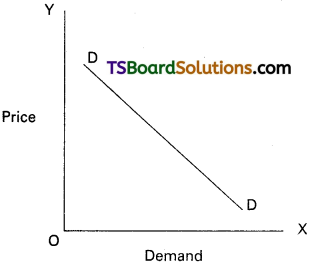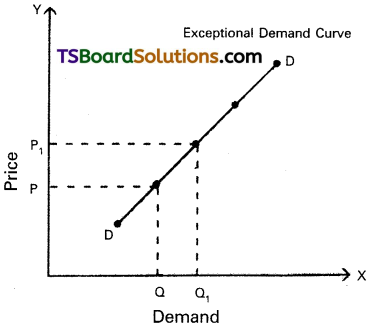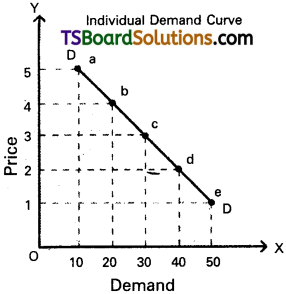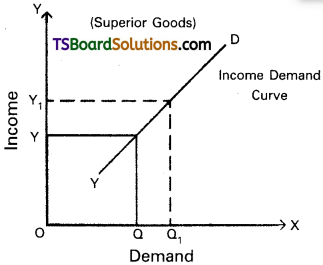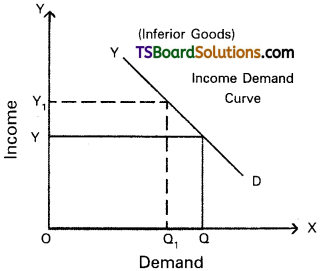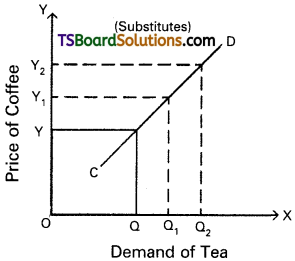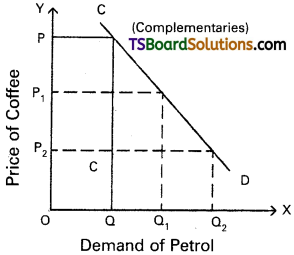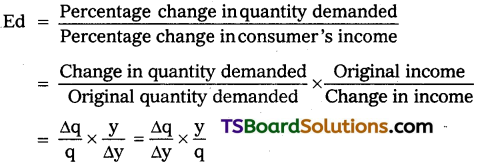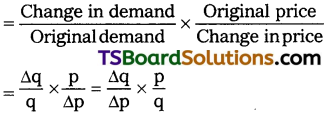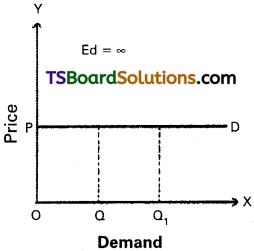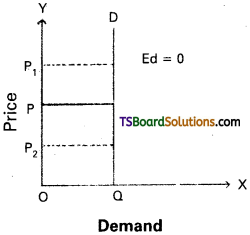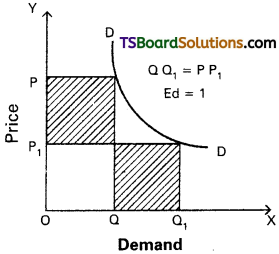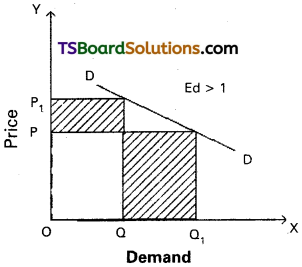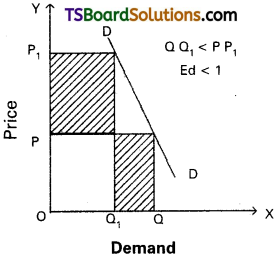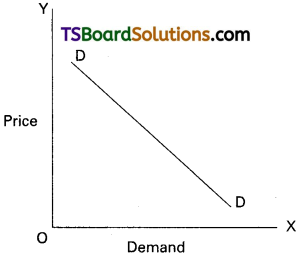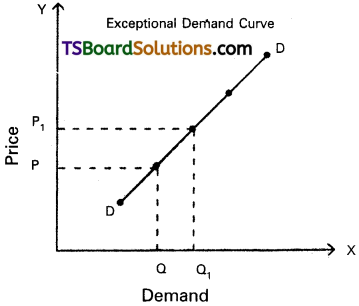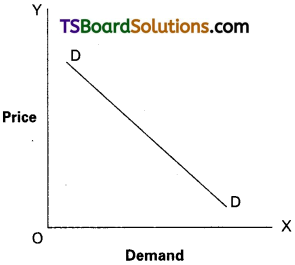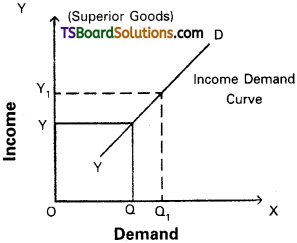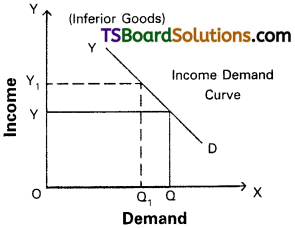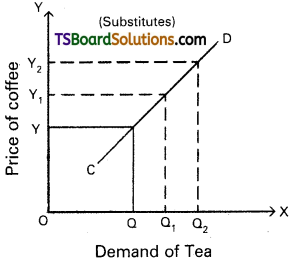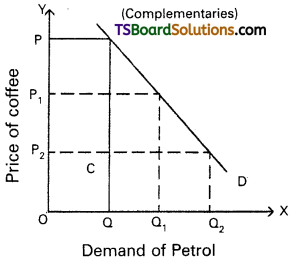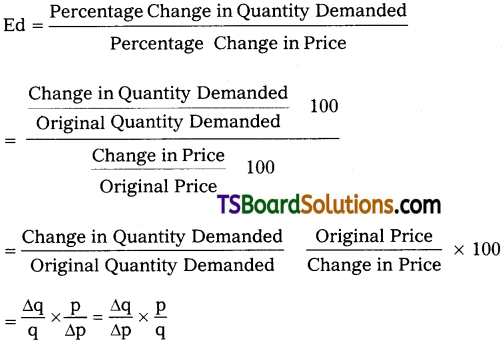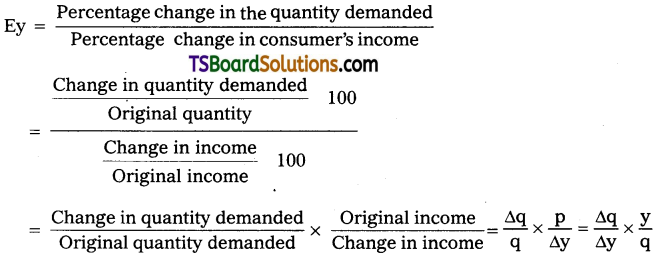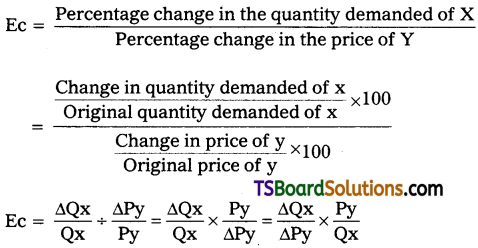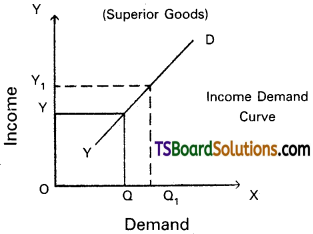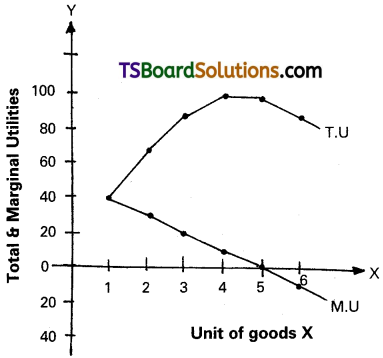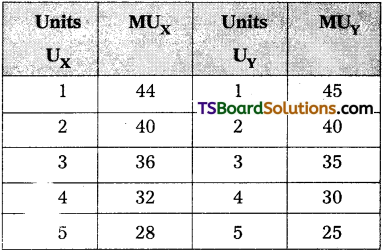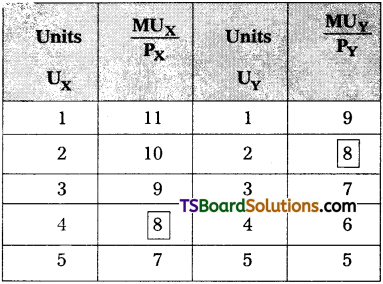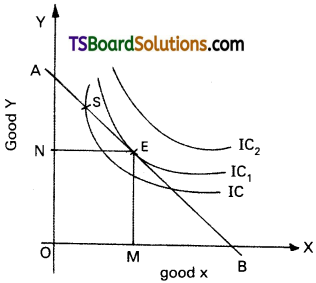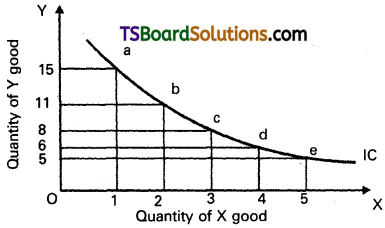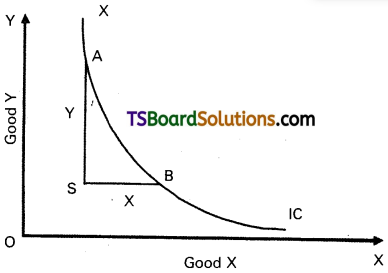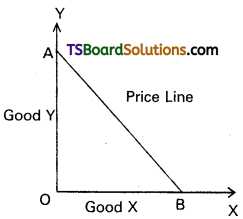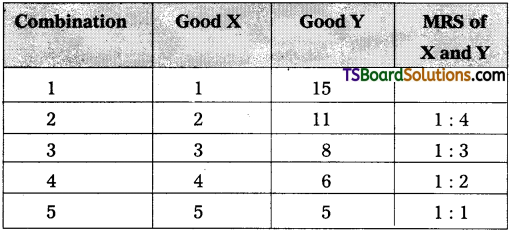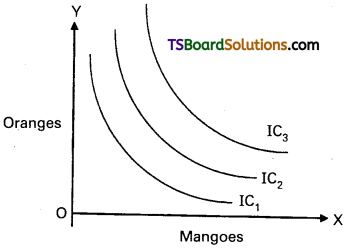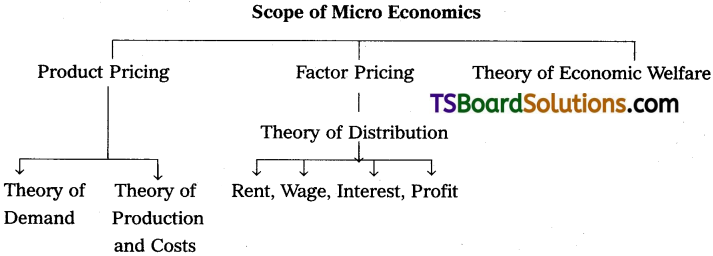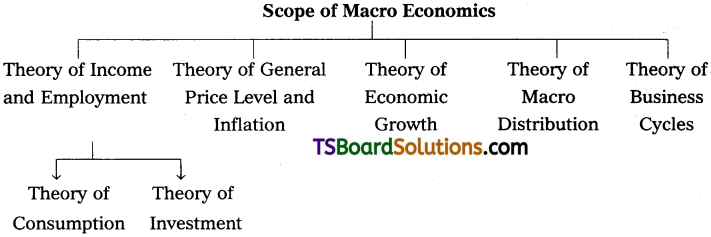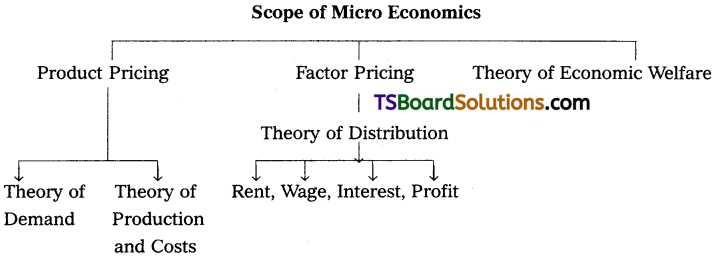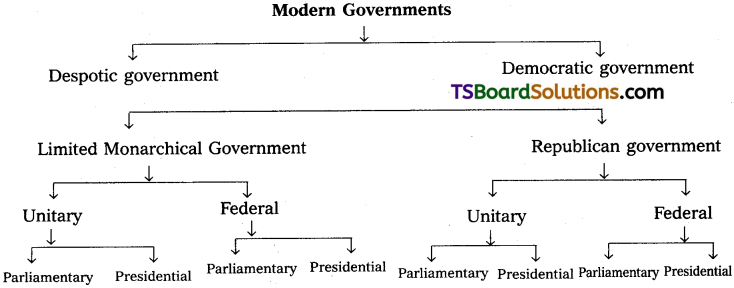Telangana TSBIE TS Inter 1st Year Political Science Study Material 4th Lesson Political Concepts Textbook Questions and Answers.
TS Inter 1st Year Political Science Study Material 4th Lesson Political Concepts
1. Law
Long Answer Questions
Question 1.
Define Law-Explain its various sources.
(or)
2. What is meant by law? Discuss the various features of law.
Answer:
Introduction :
Law is an important concept in the study of political science. It is an important feature of modern state. Law regulates the external behaviour of individuals. It determines and regulates the nature of individual’s activities.
Individual’s life, social order, political system, economic transactions, cultural activities etc., remain paralysed in the absence of laws.
It is due to the deterioration of legal system that public life, governmental organisations and state activities were affected to a great extent in some contemporary states. Afghanistan, Iraq, Nigeria, Somalia, Soviet Union, Ukraine, Yemen, Palestine etc., are some examples of such states.
Meaning :
The term “Law” is derived from the Teutonic (German) word “Lag” which means “To Lay”, “To Set” or something fixed.
The second dimension is that the word “Law” had its roots in the Latin words “Jus and Jungere” which means bond or Tie.
Definitions :
Political thinkers defined law in different ways which are listed below :
- “Law is the command of the sovereign”. – John Austin
- “Law is the system of rights and obligations which the state enforces”. – T.H. Green
- “Law is a general rule of external action enforced by the sovereign political authority”. – T.E. Holland
- “Law is a body of rules which the state recognises and applies in the administration of Justice”. – John Salmond
Sources of Law :
Law is a product of history. It has passed through various stages of development. Several elements have contributed to its evolution. In Legal sense, the state is the main source of law. Professor T.E. Holland mentioned six sources of Law. They are
- Customs
- Religion
- Judicial Decisions
- Scientific Commentaries
- Equity and
- Legislature.
1) Customs, Practices and Traditions :
These are one of the important sources of law. In primitive societies, there were no laws in written form. All disputes were settled in accor-dance with social customs and traditions. Customs regulated the social life in the early societies. Customs and traditions cannot be laws in political sense. But, when the State recognises certain traditions, they in turn become laws. For example, the laws relating to marriage, divorce etc., found in our Country are based on traditions, the common law of England.
2) Religion :
In ancient times customary laws and religious laws were intermixed. The religious teachers enjoyed unlimited powers in those times. Their decisions were treated on par with laws. The primitive men believed that the judgements of the religious teachers had divine sanction. The ancient Roman laws were merely the religious laws. The Hindu and Muslim laws derived inspiration mainly from religion.
3) Judicial Decisions/Adjudication/Judgement of the Courts :
The judgements of the judges also serve as a source of law. Generally, judges interpret laws, apply them to particular cases and deliver judgements. Their judgements become precedents and are usually followed by other judges in similar cases. In course of time such judgements acquire the status of law. In this way judges add to the law of the country. There are many instances that new laws have evolved by way of interpretation. Many of the laws in Britain, America and India have originated from the judgements of the Judges of the respective countries.
4) Scientific Commentaries :
These are the works of great Jurists. The views of the Jurists expressed in their works also act as and important source of law. The Jurists collect and compare the past customs and laws with those of the present. While doing so, they point out the defects in the existing laws and suggest ways for their improvement. The views of the Jurists however, do not become laws. But, they become laws when they are recognised by the courts. For example, the writings of Coke and Black Stone in the U.K. are held in high esteem. The same is the position of Story and Kent in America and the Vignaneswara and Apararka in India.
5) Equity :
Equity means fairness or justice. It is also a kind of Judge – made law. It is an informal method of making a new law or altering an old law to new conditions. Sometimes, the courts may be confronted with the disputes about which the law is silent. Under such situation, the Judge will give relief to the aggrieved party by using principles of social justice and humanism common sense. In course of time, they acquire the status of law. In equity, Judge is adding to the law what is missing therein and creating a new one.
6) Legislature :
This is the most important and direct source of law. Most of the laws now-a-days are made by the legislatures. Hence, legislatures are regarded as “Law-Making Factories”. They frame new laws, amend the existing laws and if necessary, abolish old laws. The other sources of law have been replaced by the legislature. This, however, does not mean that they have no role to play in influencing laws. While framing laws, the legislators bear in mind the customs, religious practices, judicial decisions etc.

Question 3.
Explain different kinds of law.
Answer:
Many political philosophers gave their classifications on laws in different ways. Of them the classification given by Maclver is mentioned worthy which can be explained in the following points.
1. Natural Law :
Natural law is also known as divine law. It is abstract. It is not created by any human agency. It is considered as the gift of nature, based on metaphysical power. It refers to the use of reason to analyse human nature. It is written in the heart of human beings by the finger of God.
2. Positive Law :
Positive law is created by the human agency. It is also known as political law. It is framed on the basis of the existing social and political conditions. It is sanctioned by the Sovereign Political Authority Violation of positive law leads to punishment.
3. Constitutional Law :
It is a basic law of any state. It defines the political system. All the basic principles of administration are included in this type. All other laws in the State are subservient to constitutional law. It is framed by the constituent assembly.
4. Ordinary Law :
It determines the relation between the state, administration and people. These laws are framed by a group of Officials authorised by law.
5. Public Law :
It regulates the relation between people and state. These laws are formulated by state for society.
6. Private Law :
It regulates the relation between citizens. It protects the rights of citizens. It also called civil law.
7. Administrative Law :
It regulates the administrative relations between the authori-ties and people. Administrative law brings discipline among the personnel in the government. Now it is implementing in France and India.
8. General Law :
It deals with the private affairs of individual in relation to the State. It covers the laws relating to Marriage, Divorce, Contract etc.
9. Statutory Law :
Statutory law is the greater part of modem law. It is enacted by the legislature of a State for the day to day administration.,
10. Common Law :
Common law is a customary law. It is a product of Customs and traditions which are popular among the people. The courts accept common law as a part of the legal system.
Short Answer Questions
Question 1.
Define Law and mention the features of law.
Answer:
Law is an important concept in the study of political science. It is an important feature of modern state. Law regulates the external behaviour of individuals.
Meaning :
The term “Law” is derived from the Teutonic word “Lag” which means something fixed.
Features of Law :
The following are some important features of law.
- Law comprises some rules and regulations which are approved by the sovereign.
- It is enforced by the state. It is valid because it is sanctioned by the State.
- It is definite, precise and universal.
- It reflects the will of the people.
- Any violation of law leads to punishment.
- Laws are compulsory and cohesive in nature.
- Law aims at securing and promoting the individual and general welfare.
- Law is dynamic as it goes on changing according to the needs of the people.

Question 2.
Discuss any four kinds of Law.
Answer:
1. Natural Law :
Natural law is also known as divine law. It is abstract. It is not created by any human agency. It is considered as trie gift of nature, based on metaphysical power. It refers to the use of reason to analyse human nature. It is written in the heart of human beings by the finger of God.
2. Positive Law :
Positive law is created by the human agency. It is also known as political law. It is.framed on the basis of the existing social and political conditions. It is sanctioned by the Sovereign Political Authority. Violation of positive law leads to punishment.
3. Constitutional Law :
It is a basic law of any state. It defines the political system. All the basic principles of administration are included in this type. All other laws in the State are subservient to constitutional law. It is framed by the constituent assembly.
4. Ordinary Law :
It determines the relation between the State, Administration and people. These laws are framed by a group of officials authorised by law.
Question 3.
Write about any three sources of Law.
Answer:
Definitions :
The English word ‘Law’ originates from the ancient Teutonic word ‘Lag’ which means “something that lies fixed or uniform”. Political thinkers defined law in different ways which are listed below :
- “Law is the command of the sovereign”. – John Austin
- “Law is the system of rights and obligations which the state enforces”.- T.H. Green
Sources of Law:
1) Customs, Practices and Traditions :
These are one of the important sources of law. In primitive societies, there were no laws in written form. All disputes were settled in accordance with social custoins and traditions. Customs regulated the social life in the early societies. Customs and traditions cannot be laws in political sense. But, when the State recognises certain traditions, they in turn become laws.
Ex : The laws relating to marriage, divorce etc., found in our country are based on traditions, the common law of England.
2) Religion :
In ancient times customary laws and religious laws were intermixed. The religious teachers enjoyed unlimited powers in those times. Their decisions were treated on par with laws. The primitive men believed that the judgements of the religious teachers had divine sanction. The ancient Roman laws were merely the religious laws. The Hindu and Muslim laws derived inspiration mainly from religion.
3) Judicial Decisions / Adjudication / Judgement of the Courts :
The judgements of the judges also serve as a source of law. Generally, judges interpret laws, apply them to particular cases and deliver judgements. Their judgements become precedents and are usually followed by other judges in, similar cases. In course of time such judgements acquire the status of law. In this way judges add to the law of the country. There are many instances that new laws have evolved by way of interpretation. Many of the laws in Britain, America and India have originated from the judgements of the Judges of the respective countries.

Question 4.
What is “Rule of Law”? Explain.
Answer:
Rule of law is a unique feature of British Constitution. It was first originated in England. Later many countries like India and the United States of America have adopted this feature. Rule of law is purely based on the principle of general law. It denotes that law should be general in form. It should be uniformly applicable to all the citizens living in a state. There should not be different types of law for various sections of the community. In other words the government must treat all the citizens equally as per the law. The governance and administration in a particular state should be carried on in accordance with the laws.
The main objective of Rule of Law is that government should not act arbitrarily. It should conduct and implement proper procedures as authorised by the legislature. Any form of violation of law should be punished in accordance with the procedures. Equality before law implies equal subjection of all classes – including the officials – to ordinary law of the land, administered by ordinary law courts.
Rule of Law is unique feature in England. As the constitution of Britain is unwritten and there is no provision of constitutional guarantee of the rights of the citizens. The pro-tection of the rights of the citizens in Britain is provided in their ordinary law in the form of ‘Rule of Law’. This is the foundation of their constitutional system.
However, rule of law was subjected to various limitations in view of several changes which have taken place in socio-economic fields. The scope of this concept is gradually shrinking owing to the over burdening of legislative work with enormous functions. On the whole, the cardinal virtue of Rule Of Law is that “All are equal before law and no one must arbitrarily be punished” constitutes the core value of any democratic system in the world.
Very Short Answer Questions
Question 1.
Explain the origin of the term “Law”.
Answer:
The term “LAW” is derived from the Teutonic route (German) “Lag” which means “To Lay”, “To Set” or something fixed. The second dimension is that the word “Law” had its roots in the Latin words “Jus and Jungere” which mean bond or tie.
Question 2.
Write any two definitions of Law.
Answer:
Political thinkers defined law in different ways which are listed below.
- “Law is the command of the sovereign”. – John Austin
- “Law is the system of rights and obligations which the state enforces”. – T.H. Green

Question 3.
What are the features of Law?
Answer:
The following are some important features of law :
- It is enforced by the State.
- It is definite, precise and universal.
- It reflects the will of the people.
- Laws are compulsory and cohesive in nature.
- Any violation of law leads to punishment.
Question 4.
Define the term “Rule of Law”.
Answer:
Rule of Law is an important type of administration of justice. It originated in England. It implies :
- Legal Equality : All are equal before law.
- No Arbitrary Action : Punishment is given only when an existing law is violated.
- No Special Rights : No individual is above law and law does not recognise any special privileges.
Question 5.
What is positive Law?
Answer:
Positive Law: Positive law is created by the human agency. It is also known as political law. It is framed on the basis of the existing social and political conditions. It is sanctioned by the Sovereign Political Authority. Violation of positive law leads to punishment.
Positive law is further classified into two categories. A) National Law and B) International Law.
Question 6.
What do you mean by Administrative Law?
Answer:
Administrative law plays an important role in the smooth functioning of administration. It regulates the administrative relations between the authorities and people. It helps the government to bring reforms in the sphere of development and welfare programmes. Administrative law brings discipline among the personnel in the government. Now it is implementing in France and India.
Question 7.
Write any two sources of Law.
Answer:
Professor T.E. Holland mentioned six sources of law. They are
- Customs
- Religion
- Judicial decisions
- Scientific commentaries
- Equity and
- Legislature:
Question 8.
What is Constitutional Law?
Answer:
The basic law according to which the government in a state is conducted is called constitutional law. It defines the political system. It is usually prepared by a body known as constituent assembly, formed only for that purpose. All other laws in the State are subordinate to this law. It also contains fundamental rights and fundamental duties.
Question 9.
What do you know about common law?
Answer:
Common law is a customary law. It is a product of customs and traditions which are popular among the people. The courts accept common law as a part of the legal system. Common law in un-written in form but is regarded as equal to statute laws in England.

Question 10.
Define Public Law.
Answer:
Public law regulates the relations between state and individuals. It explains the basic structure and functions of the state. It covers the basic rights of the individuals against the interference of the State. It must be followed by the citizens. Its violation leads to punishment.
Question 11.
Explain what is unique about British constitution.
Answer:
Rule of law is a unique feature of British Constitution. It was first originated in En- ‘ gland. Later many countries like India and the United States of America have adopted this feature.
Question 12.
What do you mean by the term Equity?
Answer:
Equity means fairness or justice. It is also a kind of Jude – Made law. It is an informal method of making a new law or altering an old law to new conditions. Sometimes, the courts may be confronted with the disputes about which the law is silent. Under such situation, the Judge will give relief to the aggrieved party by using principles of social justice and humanism common sense. In course of time, they acquire the status of law. In equity Judge is adding to the law what is missing therein and creating a new one.
Question 13.
What are the Scientific Commentaries?
Answer:
These are the works of great Jurists. The views of the Jurists expressed in their works also act as an important source of law. The Jurists collect and compare the past customs and laws with those of the present. While doing so, they point out the defects in the existing laws and suggest ways for their improvement. The views of the Jurists however, do not become laws. But, they become laws when they are recognised by the courts. Ex : The writings of Coke and Black Stone in the U.K. are held in high esteem. The same is the position of Story and Kent in America and the Vignaneswara and Apararka in India.
Question 14.
Explain the legislature as the source of law.
Answer:
This is the most important and direct source of law. Most of the laws now-a-days are made by the legislatures. Hence, legislatures are regarded as “Law-making Factories”. They frame new laws, amend the existing laws and if necessary, abolish old laws. The other sources of law have been replaced by the legislature. This, however, does not mean that they have no role to play influencing laws. While framing laws, the legislators bear in mind the customs, religious practices, judicial decisions etc.
Question 15.
‘Rule of Law’ in the Constitution of India.
Answer:
Rule of law is purely based on the principle of general law. It denotes that law should be general in form. It should be uniformly applicable to all the citizens living in a state. There should not be different types of law for various sections of the community.
2. Liberty
Long Answer Questions
Question 1.
Define Liberty and describe various types of Liberty.
Answer:
Introduction :
The concept of Liberty is of great significance in the study of political science. Liberty is an essential condition without which man cannot develop his personality. It became a source of inspiration to the millions of the people living all over the world.
Meaning :
The term liberty is derived from the Latin word “LIBER” which means free from restrictions.
Definitions :
Liberty is defined in many ways by different political thinkers. Some of them are cited below :
- “Liberty means the absence of restraints”. – J.R. Seeley
- “Liberty is the freedom of an individual to express without any external hindrance to his personality”. – G.D.H. Cole
- “Liberty means the positive power of doing or enjoying something worth doing or enjoying”. – TH. Green
- “Liberty is the eager maintenance of that atmosphere in which men have the opportunity to be at their best selves”. – H.J. Laski
Types of Liberty :
Liberty is of different types. Some of them may be described in the following :
- Natural liberty
- Civil liberty
- Economic liberty
- Political liberty
- National liberty.
1. Natural liberty :
Natural liberty is understood as uncontrolled freedom or absolute freedom. It is believed that natural liberty existed in the pre-social and pre-state human life. According to this concept there were no rules and regulations except the laws of nature in the past. All persons were free to do anything according to their will arid capacity. But this type of liberty is not possible in civilised society, since liberty is a social condition. True liberty does not inconvenience others. Liberty is not a licence. Natural liberty is equal to anarchy. The weak cannot enjoy liberty without law. Some writers imagined that this kind of liberty existed before the origin of state.
2. Civil liberty :
Civil liberty is also known as personal liberty. It relates to the individual’s freedom in his life as a member of the social organisation. It is enjoyed by the individuals in the society. Civil liberty is the essential pre-requisite to the existence and survival of human beings. It enables them to lead happy, honorable and civilised life in the state. So it is a must to every one. The state recognises the various freedoms of individuals. In this regard Gettle said thus “Civil liberty is the group of rights recognised and implemented by the state”. The constitution of the America and the India have in corporated civil liberty in the form of fundamental rights. Civil liberty is manifested in several rights. These include A) Right to Life B) Right to Work C) Right to Property D) Right to Religion E) Right to Speech, Expression, Assembly, Movement and Residence etc.
3. Economic liberty :
Economic liberty means the right of everyone to earn his livelihood. Laski described economic liberty as the security and opportunity to find reasonable significance in earning one’s daily bread. Economic liberty ensures everyone freedom from want and fear, hunger and starvation, unemployment and insufficiency. Economic liberty denotes freedom from want or insecurity of economic nature. Without economic liberty democracy is meaningless. It will also be secured by adopting the following measures.
- Provision of minimum wages.
- Guarantee of the right to work.
- Protecting the workers from unemployment, sickness and other types of insecurity.
- Providing adequate leisure.
- Giving representation to the workers in the management of the industries.
4. Political liberty :
Political liberty facilitates the citizens to take part in the political affairs of the state. Laski regarded political liberty as the power to be-active in the affairs of the state. Gilchrist considered that political liberty is synonymous with democracy. Leacock described political liberty as constitutional liberty or liberty to choose one’s own government. Political liberty is confined to the citizens alone. It is positive in nature. Political liberty provides several rights in political matters. These include (i) right to vote, (ii) right to contest as candidates in elections, (iii) right to hold public office, (iv) right to criticism etc. Laski emphasised that political liberty becomes real when there prevails (i) education (ii) honest and impartial press etc. Political liberty will be realized only in a democratic system.
5. National liberty :
National liberty implies the freedom and independence of the state. It also denotes the sovereignty of the state. Every state enjoys this liberty and remains free from the political domination of other states. This liberty is essential for the progress of nation in all spheres. It was manifested in several countries since ancient period. Many countries made efforts for securing this type of liberty. The Greeks fought a war of independence against the Turks. Similarly the Indian masses under the leadership of Mahatma Gandhi waged a non-violent struggle to secure national freedom from the British rule. National liberty is very valuable. Great leaders like Thomas Jefferson emphasised the significance of national liberty.

Question 2.
What do you mean by Liberty? What are the safeguards of Liberty?
Answer:
Introduction :
The concept of Liberty is of great significance in the study of political science. Liberty is an essential condition without which man cannot develop his personality. It became a source of inspiration to the millions of the people living all over the world.
Meaning :
The term liberty is derived from the Latin word ” LIBER” which means free from restrictions.
Definition :
- “Liberty means the absence of restraints”. – J.R. Seeley
- “Liberty means the positive power of doing or enjoying something worth doing or enjoying”. – T.H. Green
Safeguards of liberty :
Liberty is the most cherished ideal of human beings. Hence, it must be safeguarded in the larger interest of the society and state. In this context, the following safeguards of liberty are worth mentioning.
1. Democratic rule :
Democratic rule is considered as a heaven to liberty. Liberty flourishes only in a democratic state. The reason is that democratic state extends protection to individual’s liberties through various laws. It creates a conducive atmosphere for the individuals to enjoy their liberties freely and impartially. It makes the people to participate in the government process directly or indirectly. It makes the people to participate in the governmental process directly or indirectly. It makes the government answerable to the people. It allows the people the right to change the government through public opinion or ballot when the government acts improperly.
2. Written and rigid constitution :
A written and rigid constitution is considered the most important safeguard of individual liberty. Such a constitution incorporates the various freedoms of individuals in several provisions. It acts as a custodian of people’s rights and liberties. It demarcates the spheres of governmental activity. It mentions about the various measures to be taken in case of people’s freedoms are infringed or confiscated by others including governmental authorities. It also imposes restraints on the political parties by not allowing them to amend the constitutional provisions for furthering their partisan interests.
3. Independent judiciary :
An independent and impartial judiciary is another safeguard of individual liberty. The judiciary will uphold the constitution and keeps the government accountable to the people. It prescribes various safeguards for protecting the fundamental rights of citizens. The judges in higher courts will deliver justice to the people on fair, free and impartial manner. Prof. Laski, while recognizing this safeguard, stated that good governance depends upon the effective functioning of judiciary.
4. Rule of law :
Rule of law is another safeguard of liberty. It is prevalent in many states like Britan, India,‘United States etc. Rule of law safeguards individual liberties in three ways. Firstly, it treats all individuals as equal. Secondly, it makes arrangement for the application and enforcement of uniform laws throughout the state. Thirdly, it exercises restraints on the executive against the use of arbitrary powers.
5. Fundamental rights :
Provision of fundamental rights will safeguard rights to a great extent. Citizens enjoy their liberties without restraints when these rights are enshrined in the constitution. Fundamental rights enable the citizens to develop their talents and realise their personality in various walks of life.
6. Economic equality :
Economic equality too acts as an important safeguard of individual liberties. It implies provision of adequate conditions for the people to come out of the evil effects of hunger, poverty, and unemployment etc. Liberty becomes real when there exists economic equality Economic equality presupposes economic justice. It is guaranteed by the state. Absence of glaring inequalities is a pre-condition of safeguarding liberty.
7. Decentralization of powers :
Liberty will be better safeguard through decentralisa-tion of powers. Individuals could enjoy their liberties when the country is free from the centralization of governmental powers and authority. When the powers of the government are allocated among the union, state, and local governments, there arises no scope for despotism arid infringement of individual liberties.
8. Freedom of press :
Some regarded freedom of press as a safeguard of individual liberty. Individuals could enjoy their liberties when the various agencies of press and other- media have autonomy in their functioning. The press will be able to serve as an important agent for creating, consolidating and expressing public opinion. It, through its impartial editorials and honest presentation of news and views, will be able to safeguard individual liberties.
9. Strong opposition :
A strong opposition is a necessary condition for promoting individual liberty. The opposition will act as a watchdog of individual liberty. Whenever the party in power or persons at higher levels of government try to subvert or circumscribe the freedoms of individuals by their oppressive and despotic acts and activities through legislation and execution, the opposition will strongly resist such attempts. It, by moving a no-confidence motion in the last resort, will uphold the liberties of the individuals.
10. Eternal vigilance :
The best safeguard to liberty is the spirit of the people. It is rightly said, “Eternal vigilance is the price of liberty”. People must be ready to fight for their liberty. They should- have the courage even to rebel against the government whenever their liberty is curbed by it. In the words of Laski, “It is the proud spirit of the citizens, that is their most real safeguard”.

Question 3.
Explain the relationship between Liberty and Law.
Answer:
Law and Liberty are the two fundamental concepts in political science. These two concepts are interdependent. There is no unanimity of opinion among political philosophers in regard to the relation between Law and Liberty.
There are two different schools which gave contradictory opinions. One school of thought believed that Law and Liberty are antithetical to each other. The other school of thought believed that Law and Liberty are inter-related to each other. Let us explain the two versions.
i) Law. and Liberty are Antithetical :
Individualists like J.S.Mill, Herbert Spencer, David Ricardo, Adam Smith believed that law always restricts the activities of human beings. The state is the principal agency which destroys individual’s liberties. It will not allow the citizens to take active part in the affairs of state and Government. Similarly, it becomes a hurdle in performing the economic activities of the nation. The recent liberalised economic policies in many countries changed the pace of their economies. These policies enabled the people to freely participate in economic activities. Therefore, individualists believed that state is a necessary evil institution. They stated that the government is the best which governs the least. Therefore, law and liberty are antithetical to each other.
ii) Law and Liberty are Complementary :
The socialists and communists believed that Law and Liberty are complementary to each other. They regarded the state as a Welfare agency. Law imposes restrictions essential for the social welfare. It is a fact that the capitalist class exploited the working class. The state shall eradicate the evils of exploitation by making necessary laws.
The idealists believed that state is a Moral Agency. The state represents the general will of the community. Individuals will be free when they obey the laws of the state. Moussolini gave a slogan “Nothing against the State”. Law always protects the interests of the people. Therefore, both the concepts of Law and Liberty are complementary to each other.
Short Answer Questions
Question 1.
Define Liberty arid describe any three types of Liberty.
Answer:
Introduction :
The concept of Liberty is of great significance in the study of political science. Liberty is an essential condition without which man cannot develop his personality. It became a source of inspiration to the millions of the people living all over the world.
Meaning :
The term liberty is derived from the Latin word “LIBER” which means free from restrictions. .
Definitions :
Liberty is defined in many ways by different political thinker. Some of them are cited below :
- “Liberty means the absence of restraints”. – J.R. Seeley
- “Liberty is the freedofri of an individual to express without any external hindrance to his personality”. – G.D.H. Cole
- “Liberty means the positive power of doing or enjoying something worth doing or enjoying”. – TH. Green
- “Liberty is the eager maintenance of that atmosphere in which men have the opportunity to be at their best selves”. – HJ. Laski
Types of Liberty: Liberty is of different types. Some of them may be described in the following :
- Natural liberty,
- Civil liberty,
- Economic liberty,
- Political liberty
- National liberty.
1. Natural liberty :
Natural liberty is understood as uncontrolled freedom or absolute freedom. It is believed that natural liberty existed in the pre-social and pre-state human life. According to this concept there were no rules and regulations except the laws of nature in the past. All persons were free to do anything according to their will and capacity. But this type of liberty is not possible in civilised society, since liberty is a social condition. True liberty does not inconvenience others. Liberty is not a licence. Natural liberty is equal to anarchy. The weak cannot enjoy liberty without law. Some writers imagined that this kind of liberty existed before the origin of state.
2. Civil liberty :
Civil liberty is also known as personal liberty. It relates to the individual’s freedom in his life as a member of the social organisation. It is enjoyed by the individuals in the society. Civil liberty is the- essential pre-requisite to the existence and survival of human beings. It enables them to lead happy, honourable and civilised life in the state. So it is a must to every one. The state recognises the various freedofns of individuals.
In this regard Gettle said thus “Civil liberty is the group of rights recognised and implemented by the state”. The constitution of the America and the India have in corporated civil liberty in the form of fundamental rights. .Civil liberty is manifested in several rights. These include A) Right to Life B) Right to Work Q Right to Property D) Right, to Religion E) Right to 1 Speech, Expression, Assembly, Movement and Residence etc.
3. Economic liberty :
Economic liberty means the right of every one to’ earn his livelihood. Laski described economic liberty as the security and opportunity to find reasonable significance in earning one’s.daily bread. Economic liberty ensures everyone freedom from want and fear, hunger and starvation, unemployment and insufficiency. Economic liberty denotes freedom from want or insecurity of economic nature. Without economic liberty democracy is meaningless. It will.also be secured by adopting the following measures.
- Provision of minimum wages.
- Guarantee of the right to work.
- Protecting the workers from unemployment, sickness and other types of insecurity.
- Providing adequate leisure.
- Giving representation to, the workers in the management of the industries.

Question 2.
Describe the evolution of the concept of Liberty.
Answer:
Introduction :
The concept of Liberty is of great significance in the study of political science. Liberty is an essential condition without which man cannot develop his personality. It became a source of inspiration to the millions of the people living all over the world.
Meaning :
The term liberty is derived from the Latin word “LIBER” which means free from restrictions.
Definitions :
Liberty is defined in many ways by different political thinkers. Some of them are cited below :
- “Liberty means the absence of restraints”. – J.R. Seeley
- “Liberty is the freedom of an individual to express without any external hindrance to his personality”. – G.D.H. Cole
- “Liberty means the positive power of doing or enjoying something worth doing or enjoying”. – TH. Green
- “Liberty is the eager maintenance of that atmosphere in which men have the opportunity to be at their best selves”. – H.J. Laski
Types of Liberty :
Liberty is of different types. Some of them may be described in the following :
- Natural liberty
- Civil liberty
- Economic liberty
- Political liberty
- National liberty.
1. Natural liberty :
Natural liberty is understood as uncontrolled freedom or absolute freedom. It is believed that natural liberty existed in the pre-social and pre-state human life. According to this concept there were no rules and regulations except the laws of nature in the past. All persons were free to do anything according to their will arid capacity. But this type of liberty is not possible in civilised society, since liberty is a social condition. True liberty does not inconvenience others. Liberty is not a licence. Natural liberty is equal to anarchy. The weak cannot enjoy liberty without law. Some writers imagined that this kind of liberty existed before the origin of state.
2. Civil liberty :
Civil liberty is also known as personal liberty. It relates to the individual’s freedom in his life as a member of the social organisation. It is enjoyed by the individuals in the society. Civil liberty is the essential pre-requisite to the existence and survival of human beings. It enables them to lead happy, honourable and civilised life in the state. So it is a must to every one. The state recognises the various freedoms of individuals. In this regard Gettle said thus “Civil liberty is the group of rights recognised and implemented by the state”. The constitution of the America and the India have in corporated civil liberty in the form of fundamental rights. Civil liberty is manifested in several rights. These include A) Right to Life B) Right to Work C) Right to Property D) Right to Religion E) Right to Speech, Expression, Assembly, Movement and Residence etc.
3. Economic liberty :
Economic liberty means the right of everyone to earn his livelihood. Laski described economic liberty as the security and opportunity to find reasonable significance in earning one’s daily bread. Economic liberty ensures everyone freedom from want and fear, hunger and starvation, unemployment and insufficiency. Economic liberty denotes freedom from want or insecurity of economic nature. Without economic liberty democracy is meaningless. It will also be secured by adopting the following measures.
- Provision of minimum wages.
- Guarantee of the right to work.
- Protecting the workers from unemployment, sickness and other types of insecurity.
- Providing adequate leisure.
- Giving representation to the workers in the management of the industries.
4. Political liberty :
Political liberty facilitates the citizens to take part in the political affairs of the state. Laski regarded political liberty as the power to be-active in the affairs of the state. Gilchrist considered that political liberty is synonymous with democracy. Leacock described political liberty as constitutional liberty or liberty to choose one’s own government. Political liberty is confined to the citizens alone. It is positive in nature. Political liberty provides several rights in political matters. These include (i) right to vote, (ii) right to contest as candidates in elections, (iii) right to hold public office, (iv) right to criticism etc. Laski emphasised that political liberty becomes real when there prevails (i) education (ii) honest and impartial press etc. Political liberty will be realized only in a democratic system.
5. National liberty :
National liberty implies the freedom and independence of the state. It also denotes the sovereignty of the state. Every state enjoys this liberty and remains free from the political domination of other states. This liberty is essential for the progress of nation in all spheres. It was manifested in several countries since ancient period. Many countries made efforts for securing this type of liberty. The Greeks fought a war of independence against the Turks. Similarly the Indian masses under the leadership of Mahatma Gandhi waged a non-violent struggle to secure national freedom from the British rule. National liberty is very valuable. Great leaders like Thomas Jefferson emphasised the significance of national liberty.
Question 3.
Explain about any three safeguards of Liberty.
Answer:
Introduction :
The concept of Liberty is of great significance in the study of political science. Liberty is an essential condition without which man cannot develop his personality.
It became a source of inspiration to the millions of the people living all over the world.
Meaning: The term liberty is derived from the Latin word” LIBER” which means free from restrictions. .
Definition :
1) “Liberty means the absence of restraints”. – J.R. Seely
2) “Liberty means the positive power of doing or enjoying something worth doing or enjoying”. -T.H. Green
Safeguards of liberty :
Liberty is the most cherished ideal of human beings. Hence, it must be safeguarded in the larger interest of the society and state. In this context, the following safeguards of liberty are worth mentioning.
1. Democratic rule :
Democratic rule is considered as a heaven to liberty. Liberty flourishes only in a democratic state. The reason is that democratic state extends protection to individual’s liberties through various laws.. It creates a conducive atmosphere for the individuals to enjoy their liberties freely and impartially. It makes the people to participate in the government process directly or indirectly. It makes the people to participate in the governmental process directly or indirectly. It makes the government answerable to the people. It allows the people the right to change the government through public opinion or ballot when the government acts improperly.
2. Written and rigid constitution :
A written and rigid constitution is considered the most important safeguard of individual liberty. Such a constitution incorporates the various freedoms of individuals in several provisions. It acts as a custodian of people’s rights and liberties. It demarcates the spheres of governmental activity. It mentions about the various measures to be taken in case of people’s freedoms are infringed or confiscated by others including governmental authorities. It also imposes restraints on the political parties by not allowing them to amend the constitutional provisions for furthering their partisan interests.
3. Independent judiciary :
An independent and impartial judiciary is another safeguard of individual liberty. The judiciary will uphold the constitution and keeps the government accountable to the people. It prescribes various safeguards for protecting the fundamental rights of citizens. The judges in higher courts will deliver justice to the people on fair, free and impartial manner. Pro. Laski, while recognizing this safeguard, stated that good governance depends upon the effective functioning of judiciary.

Question 4.
What are the. characteristics of Liberty?
Answer:
Meaning :
The term Liberty is derived from the Latin word “LIBER” which means free from restraints.
Definition :
“Liberty means the absence of restraints”. – J.R. Seely
Characteristics of Liberty :
The. following are the important characteristics of Liberty.
- Liberty is a dynamic concept. Its interpretation varies according to time, place and wishes of the people.
- Liberty always opposes political subjugation, imprisonment and slavery.
- It always aims at realizing the aspirations of the individuals.
- Liberty always means absence of irrational restraints and presence of favourable conditions.
- It is the product of rights.
- It is essential for the realization of human personalities.
- It is found only in democratic states.
- It is manifest in the form of rights.
- It does not mean license to do whatever a person wants. It is always subject to limitations.
Question 5.
What do you mean by Civil Liberty?
Answer:
Civil liberty is also known as personal liberty. It relates to the individual’s freedom in his life as a member of the social organisation. It is enjoyed by the individuals in the society. Civil liberty is the essential pre-requisite to the existence and su human beings. It enables them to lead happy, honourable and civilised life in the sta;. Isa must to every one. The state recognises the various freedoms of individuals. In this regard Gettle said thus “Civil liberty is the group of rights recognised and implemented by the state”.
The constitution of the America and the India have in corporated civil liberty in the form of fundamental rights. Civil liberty is manifested in several rights. These include A) Right to Life B) Right to Work Q Right to Property D) Right to Religion E) Right to Speech, Expression, Assembly, Movement and Residence etc.
Very Short Answer Questions
Question 1.
What is negative Liberty?
Answer:
Liberty means absence of restraints or constraints. It is callaed negative liberty.
Question 2.
What is positive Liberty?
Answer:
It is understood as creating necessary conditions and removing all possible constraints for the development of human being by the intervention of the state. It is called as positive liberty.
Question 3.
List out any four characteristics of Liberty.
Answer:
Characteristics of Liberty: The following are the important characteristics of Liberty.
- Liberty is a dynamic concept. Its interpretation varies according to time, place and wishes of the people.
- Liberty always opposes political subjugation, imprisonment and slavery.
- It always aims at realizing the aspirations of the individuals.
- Liberty always means absence of irrational restraints and presence of favourable conditions.
- It is the product of rights.
Question 4.
Mention the names of four types of liberty.
Answer:
Liberty is of in the following types namely :
- Natural liberty
- Civil liberty
- Economic liberty
- Political liberty and
- National liberty.
Question 5.
What do you mean by Civil Liberty?
Answer:
Civil liberty is also known as personal liberty. It is the essential pre-requisite to the existence and survival of* human beings. It enables them to lead happy, honourable and civilised life in the state. Civil liberty is manifested in several rights like A) Right to Life B) Right to Work C) Right to Property D) Right to Religion E) Right to Speech, Expression, Assembly, Movement and Residence etc.

Question 6.
Write about Political Liberty.
Answer:
Political liberty facilitates the citizens to take part in the political affairs of the state. Political liberty is confined to the citizens alone. Political liberty provides several rights like
- Right to vote
- Right to contest as candidates in elections
- Right to hold public offices
- Right to criticism etc.
Question 7.
Explain the measures for securing Economic Liberty.
Answer:
It is possible to achieve complete economic liberty if the following measures are taken.
- Provision of minimum wages.
- Guarantee of the right to work.
- Protecting the workers from unemployment, sickness and other types of insecurity.
- Giving representation to the workers in the management of the industries.
Question 8.
What is Economic Liberty?
Answer:
Economic liberty means the right of every one to earn his livelihood. Economic liberty ensures everyone freedom from want and fear, hunger and starvation, unemployment and insufficiency. It will be secured by adopting the following measures.
- Provision of minimum wages.
- Guarantee of the right to work.
- Protecting the workers from unemployment, sickness and other types of insecurity.
- Providing adequate leisure etc.
Question 9.
What do you know about National Liberty?
Answer:
National Liberty implies the Freedom and Independence of the state. It also denotes the sovereignty of the state. Every state enjoys this liberty and remains free from the political domination of other states. Ex: The Indian masses under the leadership of Mahatma Gandhi waged a non-violent struggle to secure National Freedom from the British Rule.
Question 10.
Mention any four safeguards of Liberty.
Answer:
- Democratic rule
- Written and rigid constitution
- Independent judiciary
- Rule of law
- Fundamental rights.
Question 11.
Write about Independent Judiciary as a safeguard of Liberty.
Answer:
Independent judiciary :
An independent and impartial judiciary is another safeguard of individual liberty. The judiciary will uphold the constitution and keeps the government accountable to the people. It prescribes various safeguards for protecting the fundamental rights of citizens. The judges in higher courts will deliver justice to the people on fair, free and impartial manner. Prof. Laski, while recognizing this safeguard, stated that good governance depends upon the effective functioning of judiciary.
3. Equality
Long Answer Questions
Question 1.
Define the term Equality? Write about different kinds of Equality.
Answer:
Meaning and explanation of Equality :
The concept of Equality is of great significance in the study of political science. The term ‘Equality’ became an important slogan and inspired the people of France, America, Russia and India during their struggle for freedom and independence.
Ther term “Equality” implies absolute equality of treatment.
In Political science, the term ‘Equality’ refers to a state which grants its citizens equality before the law and equal opportunities to develop their personality. But it may be noted that individuals are not equal in many respects. While some of them are strong, some others may be weak. Similarly some are more intelligent than others. In this way, men differ in many respects. Hence, equality of treatment is not possible. In other words, it implies that state should grant to its citizens equality before law and equal protection by law.
Definitions :
- “Equality means first of all the absence of special privilege. In the second place “It means that adequate opportunities are laid open to all”. – H.J. Laski
- “Equality implies equal rights for all the people and abolition of special rights and privileges”. – Barker
Types of Equality :
There are many types of equality. They may be analysed in the following.
1. Social Equality :
Social equality stands for equality of status and absence of class distinctions and discrimination. It exists when no individual is made to suffer on account of his caste, class, colour, creed, race etc. For instance, the constitution of India does not recognize caste or class distinctions. In fact it has opposed the practice of untouchability. When all citizens enjoy social equality, there will be no discrimination against anyone on the grounds of caste, class, colour, creed, race and place of birth and legal rights. Social equality cannot be achieved only through laws. There must prevail a sentiment of equality among individuals. The following elements help in achieving and maintaining social equality.
- Special privileges should not be allowed by the state to any citizen.
- The government shall adopt and implement a uniform policy in the fields of education, employment, administration and legislation.
- People must have a broad outlook with the qualities of tolerance, sacrifice, honesty etc., in social and religious affairs.
- Citizens of a state should maintain harmonious relations with their fellow citizens.
- People should not use their name of the caste, sect or religion at the time of forwarding petitions.
- Inter caste marriages should be encouraged.
2. Economic equality :
This kind of equality is a precondition for the enjoyment of social and political equalities. Its absence leads to several social and political problems. Economic equality does not mean equal distribution of social wealth among all the people. It only means the elimination of inequalities in wealth, income and property. The basic needs like food, shelter and clothing must be available to all. In the opinion of Laski, “Economic equality means the abolition of unfettered and irresponsible will in the industrial world”. In Barker’s view, “Economic equality is partly a matter of status and partly a matter of property and income”.

Question 2.
What is equality? Explain its characteristic features.
Answer:
Meaning and explanation of Equality: The concept of Equality is of great significance in the study of political science. The term ‘Equality1 became an important slogan and inspired the people of France, Ameri ca, Russia and India during their struggle for freedom and independence.
The term “Equality” implies absolute equality of treatment.
In Political science, the term .’Equality’ refers to a state which grants its citizens equality before the law and equal opportunities to develop their personality. But it may be noted that individuals are not equal in many respects. While some of them are strong, some others may be weak. Similarly some are more intelligent than others. In this way, men differ in many respects. Hence, equality of treatment is not possible. In other words, it implies that state should grant to its citizens equality before law and equal protection by law.
Essential Features of Equality:
1. Equality as a Claim of Right :
Equality is a prescriptive term, not a descriptive one. We argue that human beings must be treated as equal, not that they are in fact equal. Equality aims at in the base of social benefits lest these benefits are cornered by a small and vocal minority impoverishing the rest of the community.
2. Equality as a Modem Idea :
Large inequalities of wealth, prestige and power have always remained prominent and almost universal features of social structure throughout human history. With beginning of scientific age, men learned to control natural phenomenon by rational and empirical knowledge of nature. This paved the way for removing such social inequalities as were not reasonable and which were also removable by human effort.
3. Equality as an Idea of Social Change :
With advance of scientific knowledge and technology, more and tore areas of natural inequality are coming within the alterable sphere. We know that health and bodily strength can be improved by proper nutrition, mental-make-up can be considerably developed by proper education and training. But availability of these benefits to an individual is dependent on his socio-economic status.
4. Essential for Social Justice and Liberty :
Equality is essential for social justice. Equality is closely connected with liberty. This is due to the fact that without liberty people cannot have equality. Liberty remains insignificant in the absence of equality.
5. Social distinctions can be based only upon public utility :
Unequal treatment would not be resented in society unless the more gifted persons employ their natural qualities to exploit others. And also, so long as authority and division of labour are based on rational grounds, inequality of status and position does not become objectionable. Inequality is not an issue so long as authority is exercised in the general interest of the society.
6. Equality does not imply literal Equality :
It means equality of opportunities. Equality demands a progressive reduction of inequalities where they are thought to be unreasonable., It does not imply literal equalization. It implies giving equality of opportunities for the development of personal qualities and capacities. It does not mean ‘equality of outcome’.
Short Answer Questions
Question 1.
Explain any three characteristic features of equality.
Answer:
Meaning and explanation of Equality: The concept of Equality is of great significance in the study of political science. The term ‘Equality1 became an important slogan and inspired the people of France, America, Russia and India during their struggle for freedom and independence.
The term “Equality” implies absolute equality of treatment.
In Political science, the term .’Equality’ refers to a state which grants its citizens equality before the law and equal opportunities to develop their personality. But it may be noted that individuals are not equal in many respects. While some of them are strong, some others may be weak. Similarly some are more intelligent than others. In this way, men differ in many respects. Hence, equality of treatment is not possible. In other words, it implies that state should grant to its citizens equality before law and equal protection by law.
Essential Features of Equality:
1. Equality as a Claim of Right :
Equality is a prescriptive term, not a descriptive one. We argue that human beings must be treated as equal, not that they are in fact equal. Equality aims at ig the base of social benefits lest these benefits are cornered by a small and vocal minority impoverishing the rest of the community.
2. Equality as a Modem Idea :
Large inequalities of wealth, prestige and power have always remained prominent and almost universal features of social structure throughout human history. With beginning of scientific age, men learned to control natural phenomenon by rational and empirical knowledge of nature. This paved the way for removing such social inequalities as were not reasonable and which were also removable by human effort.
3. Equality as an Idea of Social Change :
With advance of scientific knowledge and technology, more and tore areas of natural inequality are coming within the alterable sphere. We know that health and bodily strength can be improved by proper nutrition, mental-make-up can be considerably developed by proper education and training. But availability of these benefits to an individual is dependent on his socio-economic status.
4. Essential for Social Justice and Liberty :
Equality is essential for social justice. Equality is closely connected with liberty. This is due to the fact that without liberty people cannot have equality. Liberty remains insignificant in the absence of equality.
5. Social distinctions can be based only upon public utility :
Unequal treatment would not be resented in society unless the more gifted persons employ their natural qualities to exploit others. And also, so long as authority and division of labour are based on rational grounds, inequality of status and position does not become objectionable. Inequality is not an issue so long as authority is exercised in the general interest of the society.
6. Equality does not imply literal Equality :
It means equality of opportunities. Equality demands a progressive reduction of inequalities where they are thought to be unreasonable., It does not imply literal equalization. It implies giving equality of opportunities for the development of personal qualities and capacities. It does not mean ‘equality of outcome’.
Question 2.
Explain any three kinds of equality.
Answer:
Definitions :
- “Equality means first of all the absence of special privilege. In the second place “It means that adequate opportunities are laid open to all”: – H.J.Laski
- “Equality implies equal rights for all the people and abolition of special rights and privileges”. – Barker
Types of Equality :
There are many types of equality. They may be analysed in the following. ,.
1. Natural equality :
This kind of equality existed in the “State of Nature”. It is based on the principle that nature has created everyone as equal. But natural equality exists no where in the world. Nature has not created all people with the same qualities. So by natural equality we generally mean the provision of equal opportunities to all. It implies the abolition of man-made and artificial inequalities.
2. Social equality :
Social equality stands for equality of status and absence of class distinctions and discrimination. It exists when no individual is made to suffer on account of his caste, class, colour, creed, race etc. For instance, the constitution of India does not reconize caste or class distinctions. In fact it has opposed the practice of untouchability. When all citizens enjoy social equality, there will be no discrimination against anyone on the grounds of caste, class, colour, creed, race and place of birth and legal rights. Social equality cannot be achieved only through laws. There must prevail a sentiment of equality among individuals. The following elements help in achieving and maintaining social equality.
- Special privileges should not be allowed by the state to any citizen.
- The government shall adopt and implement a uniform policy in the fields of education, employment, administration and legislation.
- People must have a broad outlook with the qualities of tolerance, sacrifice, honesty etc., in social and religious affairs.
- Citizens of a state should maintain harmonious relations with their fellow citizens.
- People should not use their name of the caste, sector religion at the time of forwarding petitions.
- Inter caste marriages should be encouraged.
3. Economic equality :
This kind of equality is a precondition for the enjoyment of social and political equalities. Its absence leads to several social and political problems. Economic equality does not mean equal distribution of social wealth among all the people. It only means the elimination’ of inequalities in wealth, income and property. The basic needs like food, shelter and clothing must be available to all. In the opinion of Laski, “Economic equality means the abolition of unfettered and irresponsible will in the industrial world”. In Barker’s view, “Economic equality is partly a matter of status and partly a matter of property and income”.
4. Political equality :
Political equality is an important land of equality. It means that all citizens will have equal access to the avenues of authority. All of them possess the same political rights, an equal voice in government and equal right to hold public offices. It may be noted that political equality is enjoyed by the Citizens only. It is not given to aliens and foreign nationals living in a state. Citizens have to utilise the opportunities given by political equality with great case, farsighted outlook and broad-mindedness. Then only political equality brings the required fruits. Then only political equality brings the required fruits. Political equality prevails and flourishes when all citizens were provided with political rights like Right to vote, Right to contest elections, Right to make petitions and Right fb criticism. That means political equality flourishes only in democratic countries.
5. International equality :
International equality means that all the states are treated equally irrespective of their geographical, economic or military composition. According to this element all nations of the world are equal whether they are large or small. For instance, the United Nations have extended equal dignity and status to all the nations in its Charter. International Equality reflects the traits of humanism. It emphasizes the peaceful settlement of disputes between the nations. Some cautioned about the occurrence of Third World War in the absence of respect to international law. They expressed apprehensions thinking that human beings will go back to the stone ages.

Question 3.
Explain origin and significance of Equality.
Answer:
Meaning and explanation of Equality :
The concept of Equality is of great significance in the study of political science. The term ‘Equality1 became an important slogan and inspired the people of France, Ameri ca, Russia and India during their struggle for freedom and independence.
The term “Equality” implies absolute equality of treatment.
In Political science, the term .’Equality’ refers to a state which grants its citizens equality before the law and equal opportunities to develop their personality. But it may be noted that individuals are not equal in many respects. While some of them are strong, some others may be weak. Similarly some are more intelligent than others. In this way, men differ in many respects. Hence, equality of treatment is not possible. In other words, it implies that state should grant to its citizens equality before law and equal protection by law.
Essential Features of Equality:
1. Equality as a Claim of Right :
Equality is a prescriptive term, not a descriptive one. We argue that human beings must be treated as equal, not that they are in fact equal. Equality aims at ig the base of social benefits lest these benefits are cornered by a small and vocal minor ity impoverishing the rest of the community.
2. Equality as a Modem Idea :
Large inequalities of wealth, prestige and power have always remained prominent and almost universal features of social structure throughout human history. With beginning of scientific age, men learned to control natural phenomenon by rational and empirical knowledge of nature. This paved the way for removing such social inequalities as were not reasonable and which were also removable by human effort.
3. Equality as an Idea of Social Change :
With advance of scientific knowledge and technology, more and tore areas of natural inequality are coming within the alterable sphere. We know that health and bodily strength can be improved by proper nutrition, mental-make-up can be considerably developed by proper education and training. But availability of these benefits to an individual is dependent on his socio-economic status.
4. Essential for Social Justice and Liberty :
Equality is essential for social justice. Equality is closely connected with liberty. This is due to the fact that without liberty people cannot have equality. Liberty remains insignificant in the absence of equality.
5. Social distinctions can be based only upon public utility :
Unequal treatment would not be resented in society unless the more gifted persons employ their natural qualities to exploit others. And also, so long as authority and division of labour are based on rational grounds, inequality of status and position does not become objectionable. Inequality is not an issue so long as authority is exercised in the general interest of the society.
6. Equality does not imply literal Equality :
It means equality of opportunities. Equality demands a progressive reduction of inequalities where they are thought to be unreasonable., It does not imply literal equalization. It implies giving equality of opportunities for the development of personal qualities and capacities. It does not mean ‘equality of outcome’.
Very Short Answer Questions
Question 1.
What is legal Equality?
Answer:
Civil equality implies availability of civil rights without any discrimination on the basis of caste, colour, creed, place of birth, religion and sex. When all citizens are subject to the same law and when law neither confers special privileges on some nor makes any individual suffers owing to his social status, religious beliefs, political views, race or caste etc., there exists civil and legal equality. In a society civil equality is said to prevail when there is equality before law and equal protection of laws. This civil and legal equality emerged in modem times with adoption of democracy.
Question 2.
What is Economic Equality?
Answer:
Economic equality :
This kind of equality is a precondition for the enjoyment of social and political equalities. Its absence leads to several social and political problems. Economic equality does not mean equal distribution of social wealth among all the people. It only means the elimination of inequalities in wealth, income and property. The basic needs like food, shelter and clothing must be available to all. In the opinion of Laski, “Economic equality means the abolition of unfettered and irresponsible will in the industrial world”. In Barker’s view, “Economic equality is partly a matter of status and partly a matter of property and income”.
Question 3.
What is. Political Equality?
Answer:
Political equality :
Political equality is an important kind of equality. It means that all citizens will have equal access to the avenues of authority. All of them possess the same political rights, an equal voice in government and equal right to hold public offices. It may be noted that political equality is enjoyed by the citizens only. It is not given to aliens and foreign nationals living in a state. Citizens have to utilise the opportunities given by political equality with great case, farsighted outlook and broad-mindedness.
Then only political . equality brings the required fruits. Then only political equality brings the required fruits. Political equality prevails and flourishes when all citizens were provided with political rights like Right to vote, Right to contest elections, Right to make petitions and Right to criticism. That means political equality flourishes only in democratic countries.

Question 4.
Equality and Social change.
Answer:
Equality as an idea of Social Change :
With advance of scientific knowledge and technology, more and more areas of natural inequality are coming tvithin the alterable sphere. We know that health and bodily strength can be improved by proper nutrition, mental-make-up can be considerably developed by proper education and training. But availability of these benefits to an individual is dependent on his socio-economic status.
Question 5.
What is International Equality?
Answer:
International equality :
International equality means that all the states are treated equally irrespective of their geographical, economic or military composition. According to this element all nations of the world are equal whether they are large or small. For instance, the United Nations have extended equal dignity and status to all the nations in its charter. International Equality reflects the traits of humanism. It emphasizes the peaceful settlement of disputes between the nations. Some cautiofted about the occurrence of Third World War in the absence of respect to international law. They expressed apprehensions thinking that human beings will go back to the stone ages.
Question 6.
What is Social Equality?
Answer:
Social equality :
Social equality stands for equality of status and absence of class distinctions and discrimination. It exists when no individual is made to .suffer on account of his caste, class, colour, creed, race etc. For instance, the constitution of India does not recognize caste or class distinctions. In fact it has opposed the practice of untouchability. When all citizens enjoy social equality, there will be no discrimination against anyone on the grounds of caste, class, colour, creed, race and place of birth and legal rights. Social equality cannot be achieved only through laws. There must prevail a sentiment of equality among individuals. The following elements help in achieving and maintaining.social equality.
- Special privileges should not be allowed by the state to any citizen.
- The government shall adopt and implement a uniform policy in the fields of education, employment, administration and legislation.
- People must have a broad outlook with the qualities of tolerance, sacrifice, honesty etc., in social and religious affairs.
- Citizens of a state should maintain harmonious relations With their fellow citizens.
- People should not use their name of the caste, sect or religion at the time of forwarding petitions.
- Inter caste marriages should be encouraged.
Question 7.
How Equality is essential for Liberty?
Answer:
Equality is essential for Liberty: Equality does not mean identical treatment which is impossible in a civil society. It means equality under similar conditions. In a civil society, some persons may not have equal status with others. But it is necessary to provide some conditions and opportunities for the people to develop their status and personality. It may be said that when all people are equal, the fruits of liberty is available to all.
In this “way liberty and equality are complementary to each other. These two concepts are so inter related that they have common objective. If liberty disregards equality, it would lead to anarchy and dictatorship. In the same way, if equality keeps itself away from liberty, it would lead to slavery. Both the ideals are essential for the betterment of the individual and the society.
Question 8.
How Liberty is essential for Equality?
Answer:
Liberty is essential for equality:
a) Liberty does not mean absolute freedom. It has some limitations. It is available to ‘ all for achieving social welfare under certain conditions.
b) Liberty cannot be treated as the monopoly of a person or a group of persons.
c) Enj oyment of liberty by a person does not affect the same of others. If one recognizes this principle, he has to respect the principle of equality. It means that the fruits of liberty are found in the branches of the tree of equality. So, liberty and equality are complementary to each other. When liberty is extended to all the people on the principles of equality, the goal of liberty could be fulfilled in the true sense.
Question 9.
What is Equality of opportunity?
Answer:
The idea of equality refers to the equality of rights and opportunities.
1. Harold Laski, in his book, ‘A Grammar of Politics’, mentioned that Equality implies fundamentally a leveling process.
2. According to Barker, equality implies “Equal rights for all the people and abolition of all special rights and privileges”.
4. Justice
Long Answer Questions
Question 1.
Define Justice and describe various types of Justice.
Answer:
Introduction :
Justice is a dynamic concept in the contemporary society. It has received the attention of several political philosophers, social reformers, economic thinkers and psychological experts. They have considered the basic instinct of individuals belonging to the various sections residing in several parts of the world. Besides, almost all states, irrespective of their political and economic doctrines, have been striving to achieve justice and to establish a society based on justice.
Meaning :
The word “Justice” is derived from a Latin word “Jus” which means “to bind”.
Definitions :
We may advance some of the definitions of Justice in the following lines.
1. Plato :
“Justice is giving to everyman his due. It is a combination of reason, courage, appetite and will in terms of the state.”
2. Aristotle :
“Justice is no other than each and every individual in society discharging his moral duties.”
3. Caphalous :
“Justice means speaking the truth and paying one’s debts.”
4. Polymarchus :
“Justice means to help friends and harm enemies.”
5. Barker :
“Justice means a combination and co-ordination of political values.” Types of Justice : There are different types of Justice. They relate to Natural, Social,
Political and Legal spheres. Let us analyse these types of Justice.
1. Natural Justice :
Natural Justice is based on the notion that every person in the world possesses some rights for availing the natural resources. Natural resources provide support to the life of each and every creature on Earth. As the human beings are the only rational creatures, it is their responsibility to see that natural resources have to be judiciously exploited. Human beings must keep in mind the requirements of future generations In this regard.
2. Social Justice :
Social Justice envisages a balance between rights of individuals and social control. It facilitates the fulfillment of the legitimate expectations of the individuals under the existing laws. It ensures several benefits and extends protection to the individuals against the interference or encroachment from others in society. It is consistent with the unity and the integrity of the nation. It fulfills the needs of the society.
Social Justice enforces the principle of equality before law. It also ensures eradication of social evils like poverty, unemployment, starvation, disease etc. It also extends protection to the downtrodden and weaker sections of society. Ultimately it provides those conditions essential for the all round development of individuals.
3. Political Justice :
Political Justice symbolises political equality. It implies provision of political rights to all the adult citizens in a state. It facilitates free and fair participation of the citizens in the governance of the country. It is manifested to the full extent in times of elections. It allows the citizens for their active participation in day-to-day administration. It is based on the premise that everyone is counted as one and none for more than one. It may be noted that political justice prevails in the State when the following conditions are prevalent
- Rule of law
- Independent Judiciary
- Popular elections to the representative bodies.
- Political parties.
- Freedom of press and assembly
- Democratic rule etc.
4. Economic Justice :
Economic Justice refers to the absence of economic discrimination between individuals on irrational and unnatural grounds. It stands for the equal treatment of individuals irrespective of differences in the income, money, wealth, property etc. In its positive aspect, it implies payment of adequate emoluments to the workers strongly abhorring disparities in the distribution of wealth and incomes. It does not allow exploitation of the weaker sections. It sees that nobody is deprived of the basic necessities of life. It hints out that everyone must be provided with adequate food, clothing, shelter and other minimum needs. It conceives just economic order in the society. It supports the principle “from each according to his ability, to each according to his needs.”
5. Legal Justice :
Legal Justice is manifested in the laws of the state. It is supplemented by customs of the society. It is embodied in the Constitution and legislative enactments in a state. It determines the legal contours of Justice. Legal Justice basically has two implications. Firstly, it implies that there is just application of the laws in society on the basis of rule of law. There will be no discrimination between individuals in the applications of laws. Secondly, laws are made in consonance with the principles of natural justice.

Question 2.
What is Justice? Explain different Concepts of Justice.
Answer:
The concept of justice has been put forth and elaborated by different theories of justice. Broadly they are categorized into three :
- Greeks, stoics and Roman Concepts of Justice,
- Modem theory of Justice and
- Contemporary theories of justice.
1. Greeks, Stoics and Foman Concepts of Justice :
Plato laid the foundation of justice. Virtue is the core value of Platonic justice. Virtue is consisted in the discharge of duty by every individual without interfering into other’s duties. For Aristotle, law abidingness is a complete virtue. Aristotle regards justice as complete virtue. According to Stoics, justice could be discovered by reason and was superior to positive law (law made by state). According to Romans justice is associated with law.
2. Modern theory of Justice :
Modem theory of justice emerged with social contact theories of Hobbes, Locke and Rousseau, after the movements of reformation, renaissance and industrial revolution. Hobbes identified justice with absolute sovereignty of the state. Locke identified justice with natural rights and Rousseau with ‘General will’.
3. Contemporary theories of Justice :
These theories focus on distinction between Substantial justice and Procedural justice. Procedural justice treats the rules of market economy as the modal rules of human behaviour. Freedom of contract is the main stay of procedural justice. It is the just procedure than its outcome which automatically is accepted as just. F.A. Hayek, Milton Friedman and Robert Nozick were its main exponents. Procedural Justice repudiates all discrimination and accepts equal dignity and moral worth of all human beings.
The idea of substantive justice corresponds to the philosophy of socialism. It holds that test of justice in society consists in ascertaining whether poor and the underprivileged have adequate opportunity to improve their lot. The allocation and distribution is the primary issue and the procedural aspects are secondary. In a capitalist system that corresponds to procedural justice, the creative freedom of human beings is destroyed as his skills, talents and energies are forced to cater to the needs of the market place instead of allowing him to pursue his own self appointed goals. Equal dignity and moral worth of all human beings is a mirage in the capitalist economy.
4. John Rawls theory of Justice :
He discovered a method for making procedural justice an instrument of meeting the requirements of substantive justice. He insisted on the emancipation of the least advantaged on priority basis. He shows that society can be strengthened by strengthening its weakest parts successively. His Justice is based on three principles 1. Principle of equal liberty 2. Principle of faire equality of opportunity 3. Difference Principle which implies any deviation from the equal distribution of primary goods can be justified only it could be proved to bring greatest benefit to the least advantaged. Thus, he tries to combine the values of Socialism and capitalism.
Short Answer Questions
Question 1.
Describe any three types of Justice.
Answer:
1. Natural Justice :
Natural Justice is based on the notion that every person in the world possesses some rights for availing the natural resources. Natural resources provide support to the life of each and every creature on Earth. As the human beings are the only rational creatures, it is their responsibility to see that natural resources have to be judiciously exploited. Human beings must keep in mind the requirements of future generations in this regard.
2. Social Justice :
Social Justice envisages a balance between rights of individuals and social control. It facilitates the fulfillment of the legitimate expectations of the individuals under the existing laws. It ensures several benefits and extends protection to the individuals against the interference or encroachment from others in society. It is consistent with the unity and the integrity of the nation. It fulfills the needs of the society.
Social Justice enforces the principle of equality before law. It also ensures eradication of social evils like poverty, unemployment, starvation, disease etc. It also extends protection to the downtrodden and weaker sections of society. Ultimately it provides those conditions essential for the all round development of individuals.
3. Political Justice :
Political Justice symbolises political equality. It implies provision of political rights to all the adult citizens in a state. It facilitates free and fair participation of the citizens in the governance of the country. It is manifested to the full extent in times of elections. It allows the citizens for their active participation in day-to-day administration. It is based on the premise that everyone is counted as one and none for more than one. It may be noted that political justice prevails in the State when the following conditions are prevalent
- Rule of law
- Independent Judiciary
- Popular elections to the representative bodies.
- Political parties.
- Freedom of press and assembly
- Democratic rule etc.
Question 2.
Point out any two concepts of Justice.
Answer:
Meaning :
The word “Justice” is derived from a Latin word “JUS” which means “to bind”.
Definition :
“Justice means speaking the truth and paying one’s detbs”. – Caphalous
Sources of Justice :
Earnest Barker gives four sources of Justice. They are mentioned as below.
- Nature
- Ethics
- Religion
- Economic elements
1. Nature :
The Greek stories perceived nature to be a source of Justice. Their perception of nature was a combination of moral philosophy and religious beliefs. For them nature, God and reason were inseparable entities. They pointed out that men who lived according to nature shared similar views of reason and God. They viewed that nature embodies three things. They are :
1. Man should be free, 2. Man should be treated equally, 3. Man should be associated with his fellow beings by the common element of reason. These three things in turn have remained as a basis for liberty, equality and fraternity in society in course of time.
2. Ethics :
Idealist thinkers like plato, Emanuel Kant, Thomas Hilly Green, Earnest Barker and other propounded that justice originated from ethical practices. They pointed out that values accepted by the society over a period of time have intum become the impersonal source of positive Justice. The state enforced this positive justice in course of time.
3. Religion :
Religion is regarded as another source of Justice. This source has been in force since medieval age. The church authorities held the notion that it was God who propounded the notions of justice, right and wrong. God, through church, initiated the concept of justice as the rule of the theory of might. Thomas Acqinas a philosopher turned saint believed that the Church is the manifestation of religion. According to him, life based on laws is the best one. The king must lead the people in right directions. He must exercise his authority in compliance to the church authority.
4. Economic elements :
Economic elements are also treated as a source of justice. These elements attained significance with the advent of industrial revolution which led to glaring economic disparities between different sections-of society. Industrial revolution, inspite of its tremendous achievements, led to the growth of miseries, poverty and immorality in society. It forced the people to have a strong zeal of enterprise. Adam Smith, David Ricardo, Thomas Robert Malthus and other classical economists analysed justice in terms of economic factors. Later, revolutionary thinkers like Karl Marx and Frederich Engles strongly advocated the role of economic elements as a basis to the justice. These thinkers began to prove the deficiencies in capitalist society. They argued that justice prevails only when economic equality is achieved through a classless society.

Question 3.
Social Justice and Indian Constitution.
Answer:
The term social justice implies a just social order. It seeks to eliminate all kinds of discrimination and abolition of privileges based on birth, race, caste, creed or sex. Therefore, Social Justice implies a reordering of social life in such a manner that the material and moral benefits of social effort are not cornered by a tiny privileged class, but accrues to the masses to ensure the uplift of the lower, weaker and underprivileged sections of the society. It ensures eradication of social evils like poverty, unemployment, starvation, disease etc.
Social justice includes economic justice and also to restore the dignity of human beings who have lost it due to lower economic, educational and cultural status. It Seeks to eradicate social discrimination at all levels. The concept of socialjustice usually applies to comprehend all the three aspects of justice – social, economic and political of these, the economic aspect is the most crucial because economic disparities and the resultant injustice are bound to erode the foundation of legal and political justice.
The Indian constitution which came into effect in 1950, particularly its Preamble and the IV part dealing with the Directive principles of state policy, is committed to the ideal of social justice – social, economics and political.
Very Short Answer Questions
Question 1.
Define Justice.
Answer:
“Justice is giving to every man his due. It is a combination of reason, courage, appetite and will in terms of the stqte” – Plato
Question 2.
What are the criteria of Justice?
Answer:
Economic elements are considered to be one of the important sources of Justice. These elements attained significance with the advent of industrial revolution which led to the vast economic disparities between different sections of the people.
Question 3.
What do you mean by Political Justice?
Answer:
Political Justice symbolises political equality. It implies provision of political rights to all the adult citizens in a state. It facilitates free and fair participation of the citizens in the governance of the country. It is manifested to the full extent in times of elections. It allows the citizens for their active participation in day-to-day administration. It is based on the premise that everyone is counted as one and none for more than one. It may be noted that political justice prevails in the State when the following conditions are prevalent 1.’ Rule of law 2. Independent Judiciary 3. Popular elections to the representative bodies. 4. Political parties. 5. Freedom of press and assembly 6. Democratic rule etc.
Question 4.
What do you know about Social Justice?
Answer:
Social Justice envisages a balance between rights of individuals and social control. It facilitates the fulfillment of the legitimate expectations of the individuals under the existing laws. It ensures several benefits and extends protection to the individuals against the interference or encroachment from others in society. It is consistent with the unity and the integrity of the nation. It fulfills the needs of the society.
Social Justice enforces the principle of equality before law. It also ensures eradication of social evils like poverty, unemployment starvation, disease etc. It also extends protection to the downtrodden and weaker sections of society. Ultimately it provides those conditions essential for the all round development of individuals.
Question 5.
What are the implications of Legal Justice?
Answer:
Legal Justice has two implications :
- It implies that there is just application of the laws in the society on the basis of rule of law.
- Laws are made in accordance with the principle of Natural Justice.

Question 6.
What are the views of John Rawls on Social Justice?
Answer:
John Rawls Admitted that:
- Social Justice implies equal access to the liberties, rights and opportunities to the deprived sections of the society.
- Social Justice is built around the idea of a social contract committed by the people for obeying certain rules.
Question 7.
What are the views of Aristotle on Justice?
Answer:
Justice is no other thaa each and every individual in society discharging his moral duties. – Aristotle
Question 8.
What are the views of Plato on Justice?
Answer:
Justice is giving to every man his due. It is a combination of reason, courage, appetite and, will in terms of the state.
Question 9.
What do you mean by procedural Justice?
Answer:
Procedural justie. Procedural justice treats the rules of market economy as the modal rules of human bahavior. Freedom of contract is the main stay of procedural justice. It is the just procedure than its outcome which automatically is accepted as just. F.A.Hayek, Milton Friedman and Robert Nozick were its main exponents. Procedural Justice repudiates all discrimination and accepts equal dignity and moral worth of all human beings.
Question 10.
What do you mean by substantitive Justice?
Answer:
Substantive justice corresponds to the philosophy of socialism. It holds that test of justice in society consists in ascertaining whether poor and the underprivileged have adequate opportunity to improve their lot. The allocation and distribution is the primary issue and the procedural aspects are secondary. In a capitalist system that corresponds to procedural justice.
5. Power and Authority
Long Answer Questions
Question 1.
Define power and explain its different kinds of power.
Answer:
The concept of power has become a key concept covering all aspects of politics. If the politics is viewed as the process of resolution of the conflict, the distribution of power within a political communities determines how the conflict is to be resolved and whether the resolution is to be effectively accepted by all parties.
Definition of power:
- H.VWiseman defined power as “the ability to get one’s wishes carried out despite resistance”.
- Hans.J.Morgenthan defined power as “Man’s control over the minds and actions of other men”.
- Edward A.Schills defined power as “the ability to influence the behaviour of others in accordance with one’s own ends”.
Different kinds (or) Forms of power :
1. Political Power :
Political power refers to the influence exercised by formal and informal organs of the state. Power, in politics, is always political power, power of the state, power of the government, and power of the laws through which’government operates. But these formal organs, in turn, are influenced by the informal organs which not only take the form of political parties in power and in opposition, but also large’ number of pressure groups, public opinion, popular movements, mass media etc. Therefore, the comprehensive analysis of power goes beyond formal organs of the state and includes informal organs of the state.
2. Technological Power :
Technology, in modem times, has become an important element in the exercise of power. In recent times, the down of intelligent machine in the form of Artificial intelligence (Al) revolution will have immense influence on man, society and politics. The computers, unintelligent machines, are already doing much of the work in contemporary democracies. Political parties rely on large automated data base to help run their campaigns. Governments increasingly utilize big data systems to manage and deliver health care and other public services. Our dependence on the technology leaves us ripe for exploitation. Its visible signs are fake news and the micro targeting of voters with machine-generated massages designed to trigger their individual prejudices so as to influence voting behavior. Therefore, whoever gains upper hand technologically will have decisive influence on politics.
3. Economic Power :
Economic power is the power derived from the possession of wealth, especially the major means of production and distribution. Economic power plays a vital role in decision making processes in liberal democracies. If a nation possesses abundant natural and other resources, it will have more economic power. The major newspapers and TV channels are owned by a handful big business houses who take full advantage of these media to promote opinion which suits their opinion. Consumer culture is promoted in a big way to suit their business interests.
4. Ideological Power :
Ideological power represents the manipulative power of the dominant or ruling classes which hold sway bn the thinking and emotions of the people and try to create an illusion of consent. Thus, the people are led to believe that they are governed with their approval while they are actually continued to be governed according to the designs of the ruling classes. This ideological domination by the ruling class through the consent of the ruled is conceptualized as ‘hegemony’ by the Italian Marxist, Antonia Gramsci (1891 – 1937). Thus, an outstanding feature of political ideology is that it provides legitimacy to the ruling classes and helps them maintain their strong hold on political power. When people are made to believe that a particular system of government is the best system, they will not be inclined to challenge the authority of the ruling classes.
5. National Power :
From the point of view of realist’s perspective, politics is a struggle for power’. ‘Whatever may be the ultimate aims of international politics, power is the immediate aim’. In the context of international relations, the national power implies a sovereign state (s) attempt to influence other sovereign state (s) in terms of achieving its own goals in international affairs. In this context, the terms like ‘unipolar’, ‘Bipolar’ and ‘multipolar’ world systems represent the world politics as dominated by one, two and many nations respectively. There are different methods of exercising national power through force, influence and authority. Force is the explicit threat or the use of military, economic and other instruments of coercion. Influence is the use of instruments of persuasion in order to alter the behavior of other nation. Authority is the compliance by one nation to the directives issued by another nation nurtured by the perception of respect, solidarity, affection, affinity, leadership, knowledge and expertise.

Question 2.
What is Power? Explain different perspectives of power.
Answer:
The concept of power has become a key concept covering all aspects of politics. Power denotes the ability of a person to fulfill his desires or to achieve his objectives. Power is a relationship in which one person or group is able to determine the actions of another in the direction of the former’s ends.
Different perspectives of power :
1. Elite Perspective :
Elite perspective of power was developed in early twentieth century by three famous sociologists : Pareto, Mosca and Michels. This perspective regards competence and aptitude is responsible for the division of society into elites and masses. The elite exercises and influences political power. This theory believes in that the division becomes natural and functional and it will have little prospects of a thorough going change in such position.
2. Group perspective :
Group perspective on power corresponds to pluralist theory. This perspective was developed by Artur Bently, it believes in that power, divides the society into two broad categories – dominant and dependent groups. According to this theory, power in society is not concentrated in a single group, but it is dispersed amongst a wide variety of social groups. These groups are largely autonomous and almost independent centers of decision. Organization of workers, peasants, traders, industrialists, consumers etc. could be cited as examples of such groups in the contemporary society. They have their own share of power in their respective spheres of operation.
3. Gender Perspective :
In recent times gender perspective has become predominant in the study of power. It recognizes the division of society into two broad groups on the basis of gender : men and women. This division was created by nature for sustaining the human race and to enable human beings build up an excellent civilization and culture. But it is society which placed men and women in dominant and dependent positions respectively. Feminist theory demands a thorough going change in this arrangement and wish to liberate women from the undue dominance of men, which is manifested in the concept of ‘patriarchy’ implying the age-old and universal dominance of man over woman.
4. Class Perspective :
Class perspective on power was developed by Marx (1818-83) and Engels (1820-95) during nineteenth century. According to this theory, political power is the product of economic power which is vested in the ownership of means of social production. From the dawn of civilization society was divided into two antagonistic classes – ‘haves’ and ‘have-nots’ on the basis of ownership and non-ownership of the means of social production. Thus this theory recognized ‘class’ as the organizing category for exercising power in society. Those who owned the means of social production had become the ‘dominant class’ and the rest of the society had been reduced to ‘dependent class’. This theory believes in establishing class-less society through socialist revolution.
5. Modem perspective :
As against the conventional theories of power which primarily concerned with ‘power over’ that is, power (of the dominant) over (the dependent), modem perspective insists on the concept of ‘power to’ that is, ‘power’ (of the dependent) to (achieve a goal of his own choice). Empowerment of vulnerable sections like for example, empowerment of women and of the ordinary people, implies equipping them with ‘power to’ resist their oppressors and gain an opportunity and ability to utilize their capacities for self-development.
Short Answer Questions
Question 1.
What is Power? What is its Significance?
Answer:
The concept of power has become a key concept covering all aspects of politics. Power denotes the ability of a person to fulfill his desires or to achieve his objectives. Power is a relationship in which one person or group is able to determine the actions of another in the direction of the former’s ends.
Significance of power :
What the concept of power for politics is the money to the subject of Economics. With the emergence of the concept of Power as focus of study, political science gained an independent status as against its earlier status of an appendage to the study of philosophy or history or law or ethics. “The exponents of the power view of politics focus on the study of the acquisition, maintenance and loss of power. Herald Lasswell and A.Kaplan defined political science as ‘the study of shaping and sharing of power’.
During the early phase of development of modem political science, it was felt that the proper scope of political science was not just the study of the state or any other formal institutions, but it was informal organs which have got lot of influence, that is power, in the state. With the inclusion of both the formal and the informal political organizations, political science has become a study of modern political dynamics and expanded its scope.
The traditional perspective of power maintained that the exercise of power divided the society into two broad categories – dominant and dependent groups. But in modern pluralist society, individuals may be divided into several competing groups according to their status and interests. These groups cannot be classified into dominant and dependent groups. They have their own share of power in their respective spheres of operation. In order to protect democracy, these groups should be allowed to exercise their influence on government in the process of policy formulation and government should also seek co¬operation of these groups in the process of decision-making. Thus, study of power in politics promotes the project of democracy.

Question 2.
Explain any two perspectives of Power.
Answer:
1. Group Perspective :
Group perspective on power corresponds to pluralist theory. This perspective was developed by Artur Bently, it believes in that power divides the society into two broad categories – dominant and dependent groups. According to this theory, power in society is not concentrated in a single group, but it is dispersed amongst a wide variety of social groups. These groups are largely autonomous and almost independent centers of decision. Organization of workers, peasants, traders, industrialists, consumers etc., could be cited as examples of such groups in the contemporary society. They have their own share of power in their respective spheres of operation.
2. Gender perspective :
In recent times gender perspective has become predominant in the study of power. It recognizes the division of society into two broad groups on the basis of gender : men and women. This division was created by nature for sustaining the human race and to enable human beings build up an excellent civilization and culture. But it is society which placed men and women in dominant and dependent positions respectively. Feminist theory demands a thorough going change in this arrangement and wish to liberate women from the undue dominance of men, which is manifested in the concept of ‘patriarchy’ implying the age-old and universal dominance of man over woman.
Question 3.
Explain three types of Authority.
Answer:
The sociologist and philosopher Max Weber distinguishes three types of Authority – namely i) Charismatic ii) Traditional and iii) Legal-rational.
Each of which corresponds to a brand of leadership that is operative in contemporary society.
i) Charismatic Authority :
The charismatic authority points to an individual who possesses certain traits that make a leader extraordinary. This type of leader is not only capable of but actually possesses the superior power of charisma to rally diverse and conflict-prone people behind him. His power comes from the massive trust and almost unbreakable faith people put in him.
ii) Traditional authority :
Traditional authority indicates the presence of a dominant personality. This leader is some one who depends on established tradition or order. While this leader is also a dominant personality, the prevailing order in society gives him the mandate to rule. This type of leadership, however is reflective of every day routine and conduct.
iii) Legal-rational authority :
Legal-rational authority is one that is grounded in clearly defined laws. The obedience of people is not based on the capacity of any leader but on the legitimacy and competence that procedures and laws bestow upon persons in authority. Contemporary society depends on this type of rationalization, as the complexities of its problems require the emergence of a bureaucracy that embodies order and systematization.
Question 4.
What is the difference between Power and Authority?
Answer:
The main points of distinction between power and Authority are the following :
i) Authority is always legitimate whereas power’s both legitimate and illegitimate :
According to Robert Dahl, legitimate power’s called authority. In the words of Lasswell, power becomes authority when it is legalised. Capacity to issue orders is power. Whereas authority is that point where decisions are taken. Authority is based on popular support. It has legitimacy behind it. On the other hand, power may or may not be legitimate one can exercise power by sheer force,for example, a military dictator or autocratic king. Legitimate power acquires the character of Authority.
ii) Authority is based pn consent, whereas power is based on force :
Fredrick holds that “Authority is the capacity to justify by a process of reasoning what is desired from the viewpoint of man. “Power is an instrument of coercion and has a physical effect’, authority could as well be based on consent and yet be more effective. The authority of a teacher, a journalist or a social worker is not based on power, and is yet greatly respected.
iii) Authority is more democratic than power :
Authority is based on consent and people’s willingness to respect and obey it. It represents the will of the people through their representatives who possess such authority. Power, on the other hand, may be exercised through force in violation of the laws of the state and used by the ruler for his own self interests.
iv) Authority reflects the ability of man to get his proposals accepted but power is the capacity of man to change the behaviour of others: According to Fredrick, authority is the capacity to justify by a process of reasoning what is desired from the point of view of man whereas power is the, capacity to control others so that they will do what they are wanted to do. Authority refers to one’s ability whereas power refers to his capacity.
v) Authority carries the element of reasoning, whereas the power includes the element of force.
Very Short Answer Questions
Question 1.
What is Power?
Answer:
Power denotes the ability of a person to fulfill his desires or to achieve his objectives, power is a relationship in which one person or group is able to determine the actions of another in the direction of the former’s ends. H.V. Wiseman defined power as “the ability to get one’s wishes carried out despite resistance”.

Question 2.
What is Authority?
Answer:
The concept of authority is closely linked with the concept of power. Authority means legitimate power. Hamuel Arendt Portrays authority as power based on consent. Following are the definitions of authority.
- “Authority is the capacity to justify by a process of reasoning what is desired from the point of view of man” – Fredrick
- “Legitimate power is often called Authority”. – Robert.A.Dahl
Question 3.
Whaf is Legitimacy?
Answer:
The word legitimacy has been derived from the Latin word ‘Legitimas’ which means lawful. According to Max Weber legitimacy is based in belief and gets obedience from the people power is effective only if it is legitimate. Undoubtedly, power has the right to use coercion but that is not its chief element power should be based on legitimacy, otherwise it would invite trouble.and may prove ineffective. J.C.Pleno and R.E.Riggs define legitimacy as “the quality of being justified or willingly accepted by subordinates that convert the exercise, of political power into rightful authority.
Question 4.
What is uni-polar world?
Answer:
Unipolarity in international politics is a distribution of power in which one state exercises most of the cultural, economic and military influence unipolar systems possess only one great power and face no competition. The posteoid war international system is unipolar. The United States defence – spending is close to half of global military expenditures. The United States of America (USA) is playing a dominant role in the.affairs of the United . Nations Organisation (UNO) and even in the world affairs since the end of the cold war in 1991.
Question 5.
What are the Formal organs of power in the state?
Answer:
These are three formal organs of power in the state. They are : i) Legislature ii) Executive and iii) Judiciary. Legislature prepares, Amends Laws and Repeals old laws. Executive implements the different laws prepared by the legislature and maintains law and order in the state. Judiciary interprets and analyses the prevailing laws and provides justice.
The will of the state is formulated, expressed and realised through these formal organs.
Question 6.
What are the Informal organs of power in the state?
Answer:
These are eight main informal organs of power in the state. They are popularly known as agents of political socialisation. They are namely :
- The family
- The school
- Peer groups (or) Reference groups
- Employment experiences
- Mass – media
- Government and Party agencies
- Symbols
- Direct contact.

Question 7.
Who propounded Elite Theory of Power?
Answer:
Elite theory of power was propounded by three famous sociologists namely Pareto, Mosca and Michels in early twentieth century. This theory regards competence and aptitude is responsible for the division of society into elites and masses. The elite exercises and influences political power. This theory believes in that the division, becomes natural and functional and it will have little prospects of a thorough going change in such position.
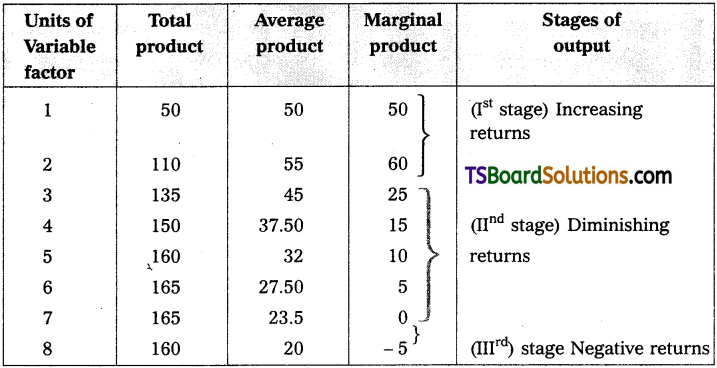
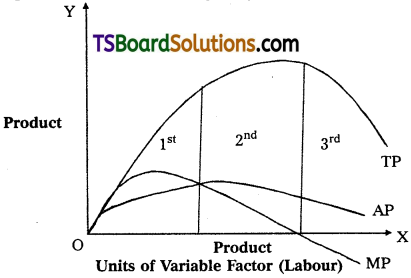
![]()
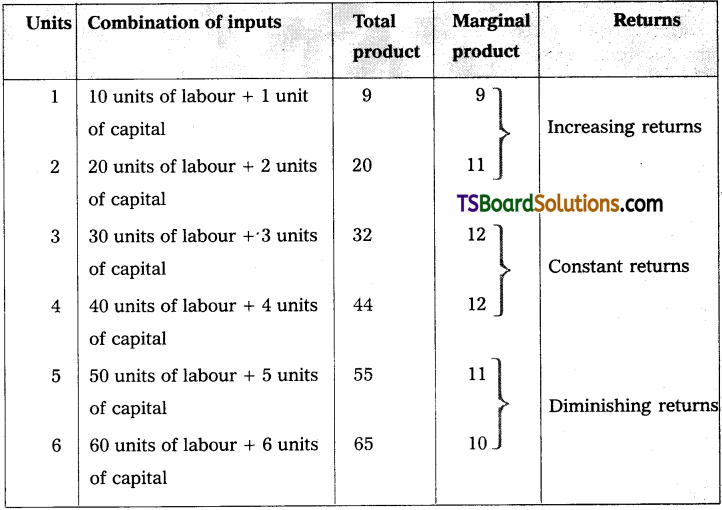
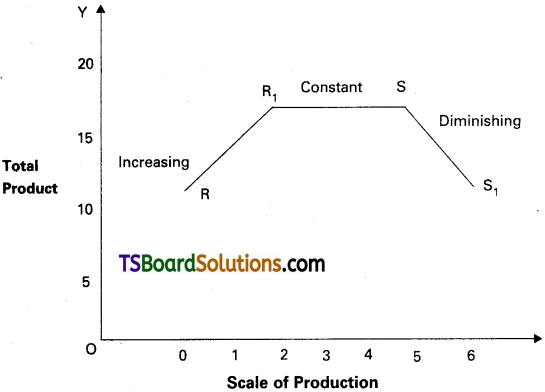
![]()

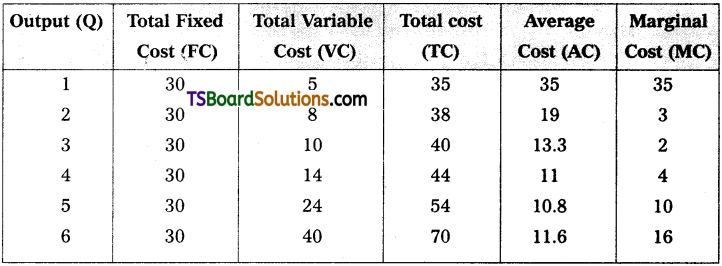
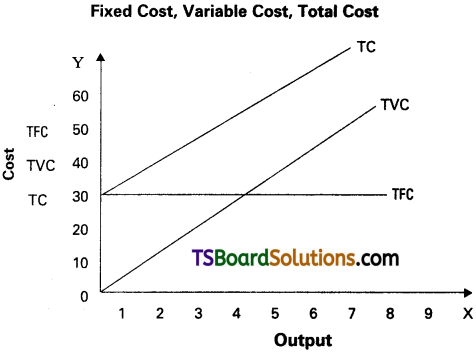
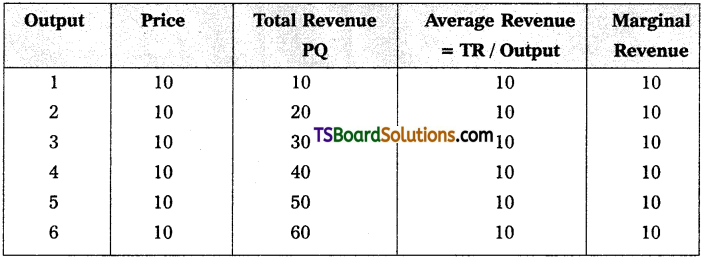
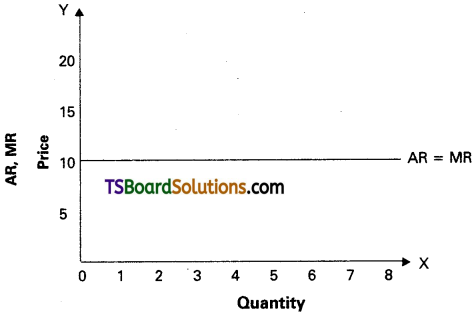
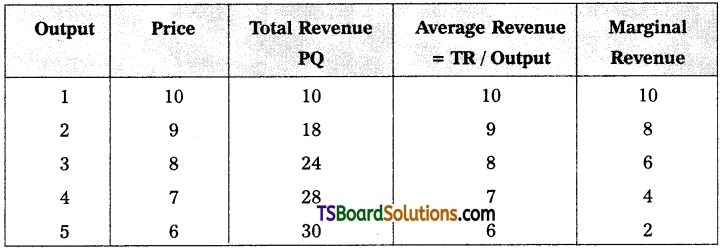
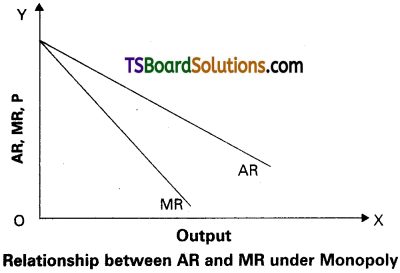
![]()
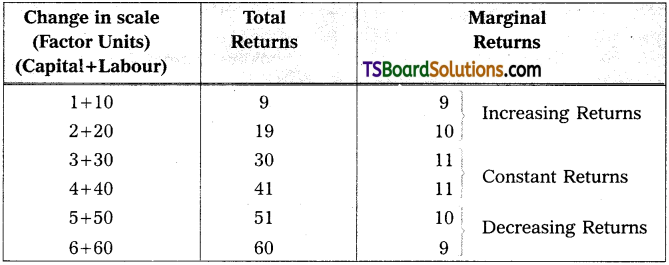
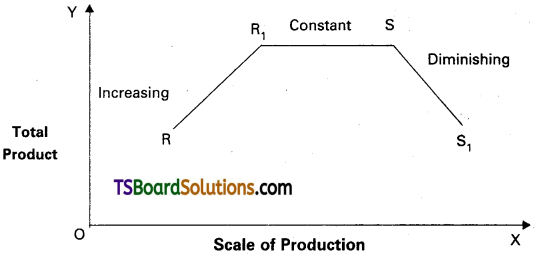
![]()
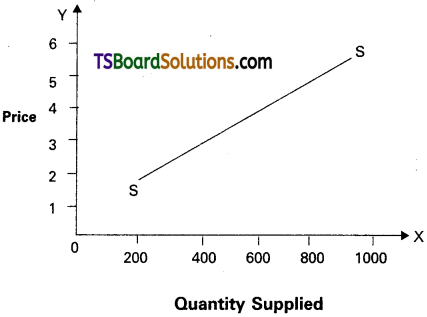
![]()

![]()
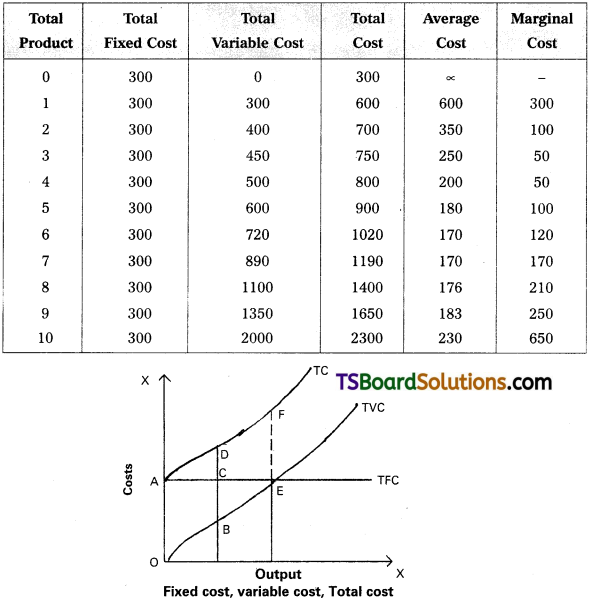
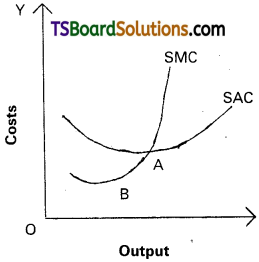
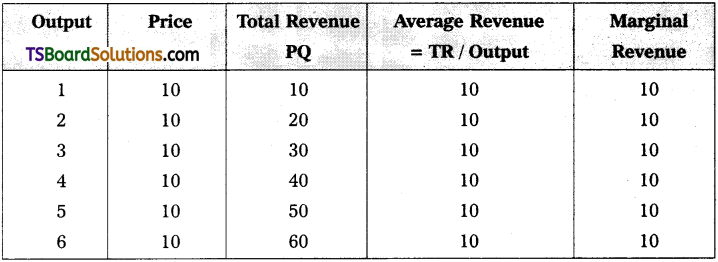
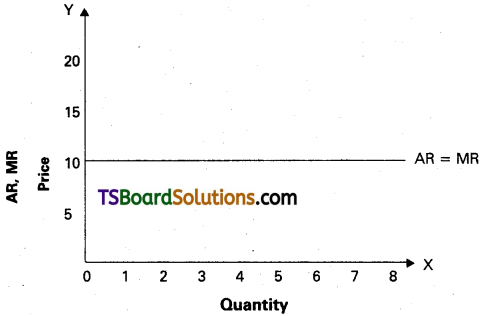
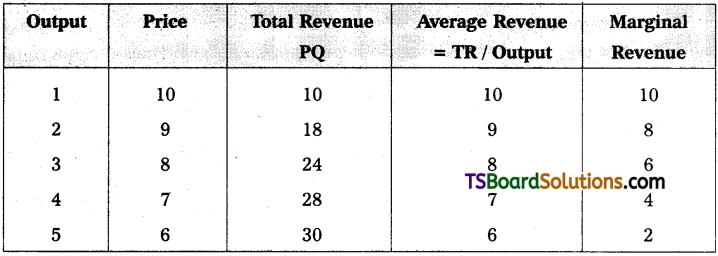
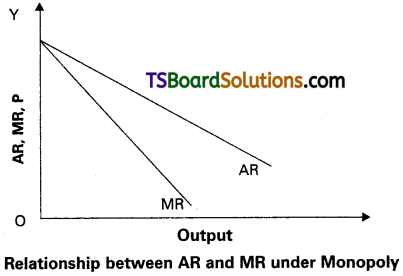
![]()
![]()
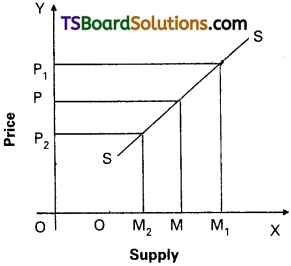
![]()
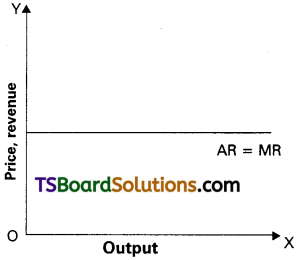
![]()

